Trailblazers and game-changers
Bemidji State University wouldn't be what it is today without the immeasurable efforts of countless Beavers. While it's impossible to adequately acknowledge every irreplaceable contributor, here are some of the pioneering leaders who have guided BSU from its inception to today.
Presidents
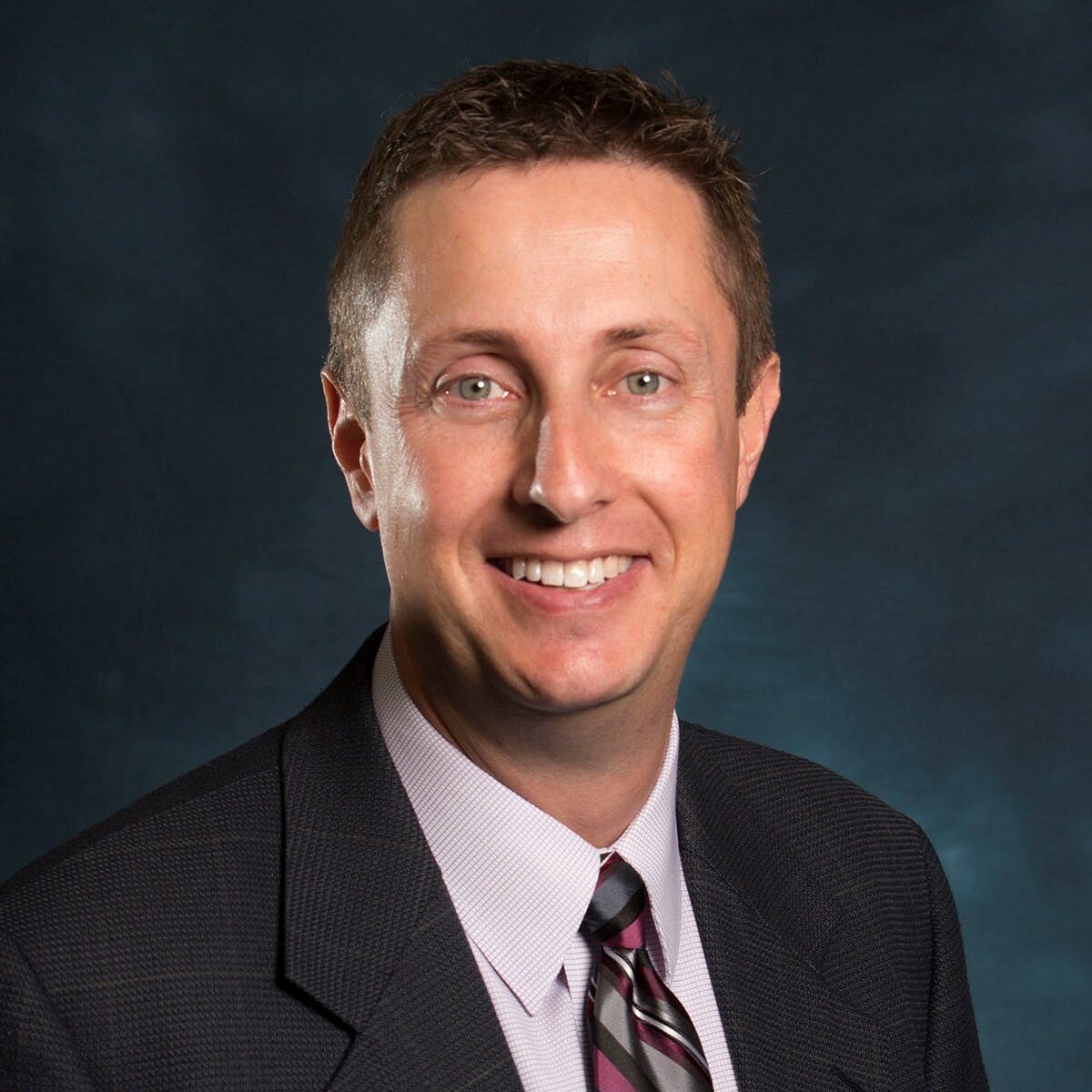
John Hoffman
2022-present
Dr. John L. Hoffman became president of Bemidji State University and Northwest Technical College on July 1, 2022.
His work as president has been defined by a drive toward the cornerstone values of advancing holistic student learning and success and diversity, equity, and inclusion.
Prior to his presidency, Hoffman served as the vice chancellor for academic and student affairs at the University of Minnesota Crookston from 2018-22, and he also assumed duties as acting senior vice chancellor in 2021. His responsibilities spanned all of academics, student affairs and enrollment management.
Hoffman's signature accomplishments have included implementing multi-faceted student success programs credited with increasing student success and retention rates; reducing the first-year retention rate disparities between Black and Indigenous students and students of color and their white counterparts; and increasing performance on two-thirds of core learning outcomes for all students during their first year of college. Other accomplishments include overhauling enrollment management functions which, pre-COVID, increased new student enrollment, increased yield, reduced summer melt and increased proportions of students of color, low-income students and first-generation students.
In 2021, he co-authored the University of Minnesota system-wide strategic enrollment management plan. He also led Minnesota Crookston aspects of system-wide plans addressing COVID-19 response and related educational initiatives.
Previously, Hoffman held faculty and a variety of administrative positions within the California State University System from 2004-18, including chair of the Department of Educational Leadership and director of the Doctor of Educational Leadership Program. Over 10 years at Cal State Fullerton, he earned tenure and advancement to full professor. His leadership contributed to significant diversification of the faculty, significant enrollment growth including increases in the racial and ethnic diversity of students and enhanced graduation rates with no measurable achievement gaps by race or gender.
Prior appointments include service as dean of students at Concordia University, Irvine from 1998-2004, multiple student affairs roles at Concordia University, St. Paul from 1995-98 and a year of service as a major gifts officer at Concordia University, Nebraska from 1994-95. He holds a bachelor’s degree from Concordia University, Nebraska and a master’s and a doctorate from the University of Minnesota.
Hoffman is the husband of Dr. Joy Hoffman and the proud stepfather of Hanna and CJ. He enjoys daily walks with his dog, occasional home improvement projects, listening to music and the annual hope and heartbreak of being a Minnesota Vikings fan.

Faith Hensrud
2016-2022
Dr. Faith C. Hensrud assumed the role of president of Bemidji State University and Northwest Technical College on July 1, 2016.
Her tenure was defined by extensive strategic planning processes, broad-ranging successes in forging new partnerships and a diligent emphasis on social justice. She also renewed BSU’s commitment to environmental sustainability by joining the Campus Climate Commitment.
Her efforts to improve the connections with the region’s Indigenous nations led to the creation of American Indian Advisory Councils for both BSU and NTC. Under her leadership, BSU also signed dual-enrollment agreements with all four Minnesota tribal colleges and led a process to craft an acknowledgment of BSU’s campus location on ancestral homelands of the Ojibwe and Dakota people.
At NTC, a partnership between the Northwest Minnesota Foundation and NTC Foundation have led to significantly increased scholarship support for NTC students. NTC also expanded its partnerships with area high schools, teaching nursing and plumbing courses on high school campuses and opened its Student Success Center, which significantly increased access to tutoring and other student support services.
Both campuses also enjoyed extensive renovations under Hensrud’s leadership. At Bemidji State, a decade-long dream to replace Hagg-Sauer Hall was finally realized in 2020. A new building, which won numerous awards for government construction projects, was part of an extensive campus renovation project that re-imagined space in four other academic buildings. At NTC, a new commercial refrigeration lab highlighted significant renovations to labs for the college’s automotive, electrical construction and nursing programs.
Most importantly, Hensrud guided both BSU and NTC safely through the first 18 months of the COVID-19 pandemic. Both campuses shared in the wide-ranging disruptions caused by the pandemic and various mitigation strategies. However, due in part to their shared pandemic response, neither BSU nor NTC had a confirmed case of COVID-19 as a result of on-campus spread and no employees or students had been lost to the virus at the time of Hensrud's 2022 retirement.
Prior to her tenure as BSU and NTC president, Hensrud served in a variety of roles at the University of Wisconsin-Superior for nearly 20 years. She joined the faculty in 1995 as a lecturer in its Department of Business and Economics, and she later served as leader of the school’s distance education and continuing education programs; associate vice chancellor for academic affairs and outreach; interim provost and vice chancellor for academic affairs and dean of faculties; and finally as provost and vice chancellor for academic affairs. She held that position for four years before moving to Bemidji.
Hensrud is also a U.S. Army veteran, serving on active duty with the 24th Transportation Battalion at Ft. Eustis, Va., from 1986-89 and as a member of the U.S. Army Reserve from 1989-2000.

Richard Hanson
2010-2016
Dr. Richard Hanson served as president of Bemidji State University and Northwest Technical College from July 2010-June 2016.
Among his accomplishments, Hanson implemented a broad restructuring of course offerings at Bemidji State University and Northwest Technical College in an effort to adapt to current market conditions, resulting in increased competitiveness for both institutions. He ushered in a new era in men’s and women’s athletics, when in 2010, the Beavers opened a new arena for hockey. With the help of the student body, Hanson implemented a tobacco-free policy on both campuses. Additionally, he founded the Bemidji School of Nursing, coordinating the instructional efforts of both NTC and BSU. He renamed the Education-Arts building as Bensen Hall, in honor of president emeritus James Bensen.
Hanson also oversaw the development of an academic master plan as part of the strategic plan for both institutions. All the while, he worked assiduously on an extensive capital campaign to raise funding for student scholarships and endowments, exceeding the $35 million goal.
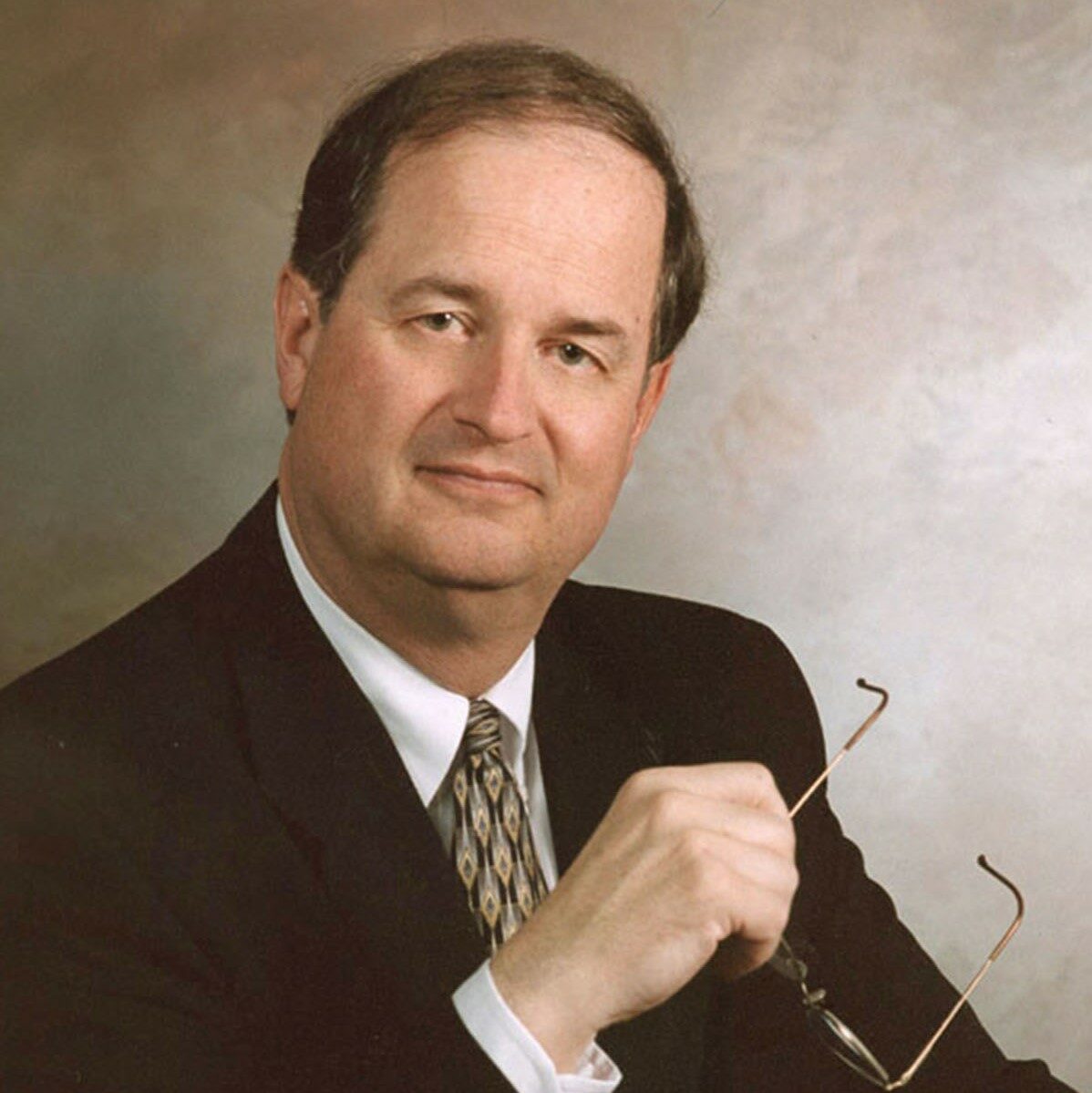
Jon Quistgaard
2001-2010
Jon E. Quistgaard served as President of Bemidji State University from August 2001-July 2010.
During his tenure at Bemidji State, there were major changes in technology, enrollment, funding and diversity. Most notably, the school diversified to include students from more than 30 states and 40 countries. Quistgaard recalls seeing more adults and military veterans seeking opportunities to further their education. Additionally, Northwest Technical College was stabilized during his time. Quistgaard was known for being approachable and friendly to students and staff, who came to know him as “Q.” Quistgaard believed deeply in the values of the university, and once said that “the true greatness of both these institutions is still in front of us.”
Prior to his presidency, Quistgaard served as the dean of graduate studies, associate vice president for academic affairs and vice president for academic and student affairs. Quistgaard started his career at the University of Arizona, where he earned his doctorate in political science.
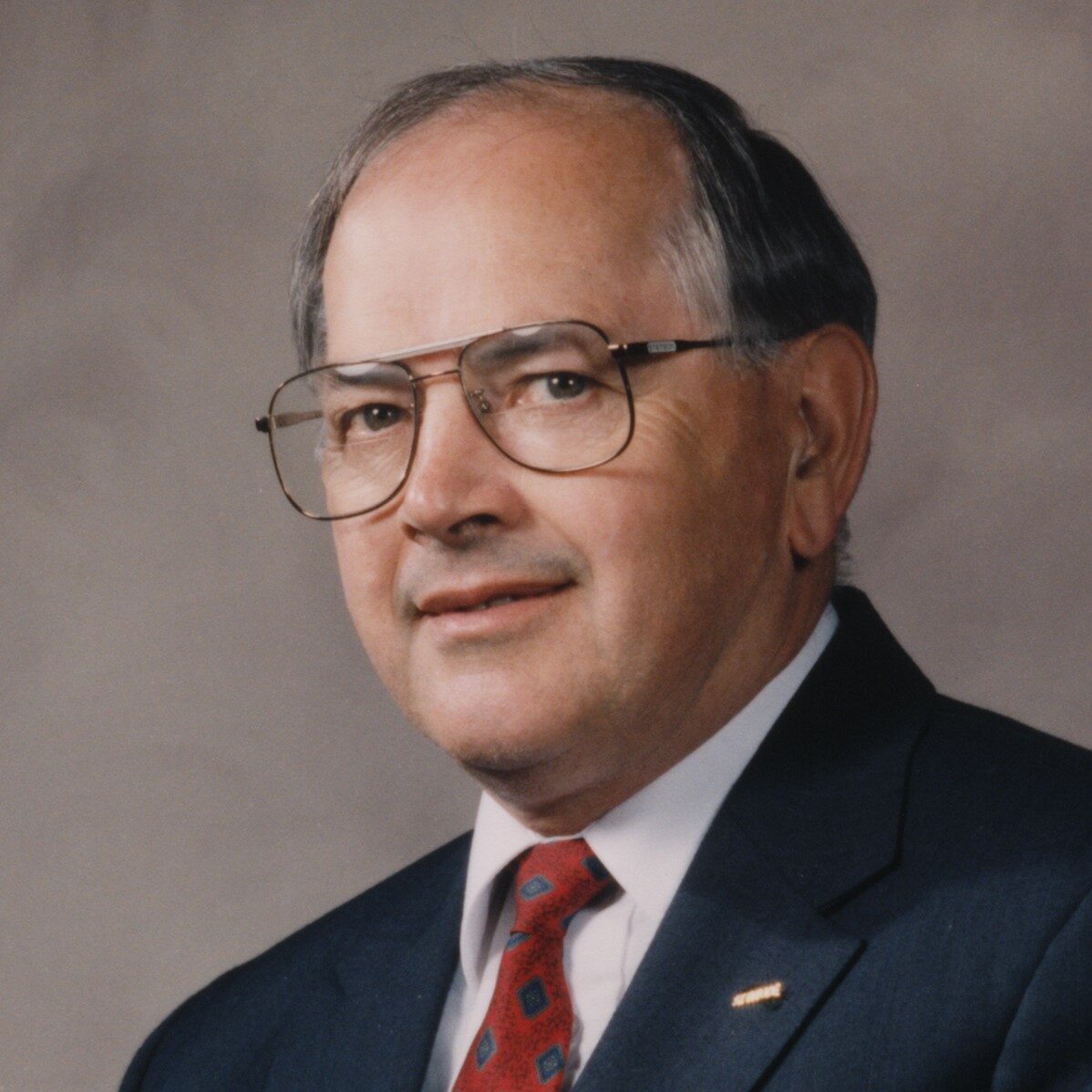
James Bensen
1994-2001
James "Jim" Bensen became the university's first alumnus to serve as president of Bemidji State University when he was selected by a unanimous vote and began his presidency on July 1, 1994.
He was an architect of growth and the quintessential visionary both during and after his presidency. Originally from Erskine, Bensen first came to Bemidji State College as a student and graduated in 1959 with bachelor's degrees in industrial education and physical education. After the unexpected death of President Les Duly and the brief interim presidency of Linda Baer, Bensen was voted in as the school's eighth permanent president and tirelessly championed economic growth at the university and in the community.
In addition to investing in the growth of the college through advocacy and philanthropy, Bensen was heavily involved in the community's development as a member of Greater Bemidji for 25 years, as a Rotarian for 45 years and through many other civic organizations and causes.
Bensen always took pride in Bemidji's cutting-edge spirit of innovation, entrepreneurship and collaboration. He led with passion, energy and vision, and he always believed in Bemidji's limitless potential.
Bensen was born on April 8, 1937, in Erskine. After graduating from Bemidji State, he went on to the University of Wisconsin-Stout to pursue his master’s degree in industrial education, administration, supervision and curriculum. Bensen received his doctorate from Pennsylvania State University in curriculum, administration and educational development in 1967.
Prior to serving Bemidji State University, Bensen served as president at Dunwoody Institute, a private, non-profit school in Minneapolis. He had also served as the dean of the School of Industry and Technology at Wisconsin-Stout.

Leslie Duly
1990-1993
Leslie C. Duly was a very easygoing and happy man. He proved he cared for the university and the students by walking around, making conversation, filling coffee cups, scooping ice cream at socials and even bringing cake to meetings. Duly wanted to be involved with the students as much as possible. After he became president on July 1, 1990, Duly said he wanted to spend a week living in Tamarack Hall, dining with students at Wally’s and listening to their concerns.
Under Duly’s presidency, Bemidji State University was listed as the highest-ranked Minnesota state university in "America's Best Colleges." Duly also helped the school receive extra funding for things like summer programs for gifted American Indian students, funds from NASA to continue a study on the effect of radiation on eye tissue and also a grant from the Ford Foundation, giving Bemidji $236,000 to be used toward a new program called “New Directions in Developing and Implementing a Multicultural Curriculum: Models of Change and Transformation.”
Bemidji State's progress under Duly was cut short when Duly died of a heart attack on May 8, 1993. The school held a memorial service where many people reminisced about all the great things Duly had accomplished at the school. He truly loved BSU, and it showed.
Duly was born on Sept. 26, 1935, in Kenmore, N.Y. He was raised in the Kenmore area but moved to the University of South Dakota to pursue his bachelor’s degree in history. He then continued his schooling at the University of Melbourne, Australia, where he received his master’s in history. Duly received his doctorate in history from Duke University’s Commonwealth Studies Institute.
After the completion of all his schooling, Duly taught at Memphis State University, Mount Holyoke College in South Kaley, Mass., and at the University of Nebraska, Lincoln. At Nebraska, Duly served as the director of university studies and received a special award for teaching excellence in the humanities.

Lowell "Ted" Gillett
1982-1990
Lowell Reno “Ted” Gillett became Bemidji State's sixth president on Aug. 1, 1982, and served until his retirement on June 30, 1990.
He was once dubbed as "Bemidji's best friend" and was first introduced to town in 1937 by his parents, who wanted him to see Paul Bunyan. Gillett was once quoted as saying, "I always had a passion for Bemidji."
Gillett's time as president was highlighted by student-centered construction and renovation projects. One of his constructions was the building of the Gillett Wellness Center, which is named in his honor, and considered by some as “perhaps the single most significant physical improvement in making the campus more attractive to students.” Gillett was also successful in renovating Pine Hall into apartments for students who were single parents in 1990. Today, Cedar Hall is used as the building for single parents to live in with their children, while Pine Hall houses freshmen. Also under Gillett, the Alumni Arch outside of Deputy Hall was established, which has become the university’s most distinguished landmark and serves as the unofficial gateway to campus.
Ted Gillett was considered a very public man. He attended all campus events, along with events that took place in the community.
Gillett was born on Feb. 23, 1925, in Minneapolis. He attended and graduated from Gustavus Adolphus College with a major in English in 1947. He began his career as a teacher and coach at Amboy Public Schools. He later taught at Sherburn Public Schools for two years before becoming a teacher and assistant principal at Austin Public Schools in 1951, where he taught for 11 years.
In 1962, Gillett decided he wanted to further his education at the University of North Dakota. After his second session of schooling, he served at St. Cloud University in several different fields, from being named professor of educational psychology to serving as vice president for academic affairs and the university's interim president.
Gillett died on Oct. 9, 2011, at age 86.
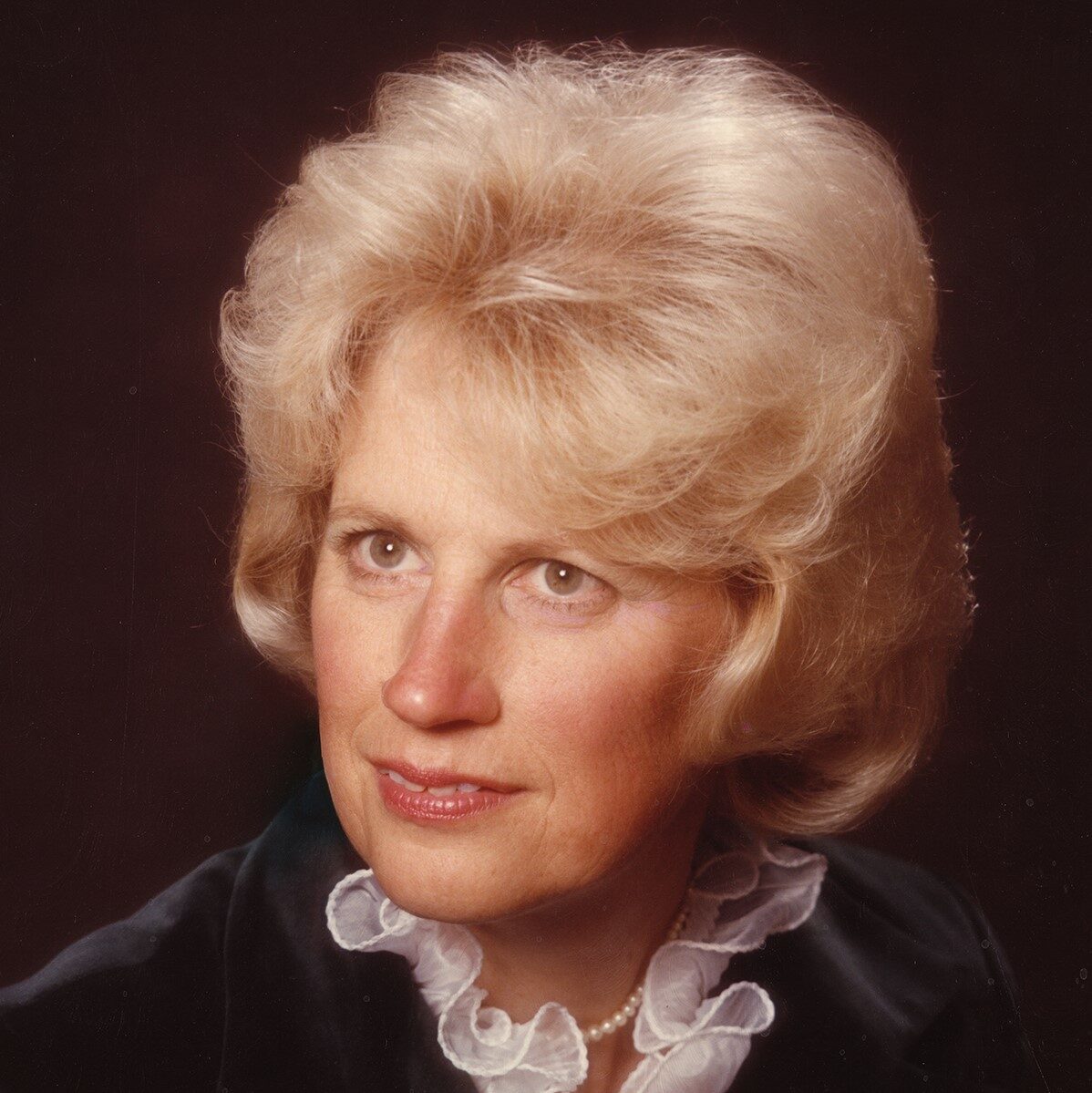
Rebecca Stafford
1980-1981
Rebecca Stafford served as president of Bemidji State University from April 9, 1980, to Dec. 16, 1981.
She was born on July 9, 1936, in Topeka, Kan. Stafford received her bachelor’s degree in sociology from Radcliffe College and then her master’s and doctoral degrees in sociology from Harvard University.
Following her 1981 resignation, Rebecca Stafford announced she accepted the position of Executive Vice President of Colorado State University, Fort Collins.

Robert Decker
1968-1979
Robert David Decker served as Bemidji State University's president for 12 years and was very influential in what was considered the “great expansion.” Eight buildings were built, three existing buildings were renovated and the enrollment hit an all-time high of 5,787 students. Decker also introduced a wide variety of new programs at the school, including computer science, criminal justice, technical illustration/graphic design, communication media and American Indian studies. The Center for Environmental Studies, the Foreign Studies Program and the Veterans Affairs Office were also created under his presidency.
After retiring in September 1979, Decker resumed teaching for about nine years until deciding to run for Senate, which he served until 1990. The Decker family then moved to California in 1996.
Decker was born on Nov. 12, 1922, in Hayes County, Texas. He received his bachelor’s, master’s and doctoral degrees from Texas A&M University, all of which were in the study of agricultural economics.
After battling Alzheimer’s for a number of years, Decker died on Oct. 19, 1999, in Ventura, Calif., at the age of 76.
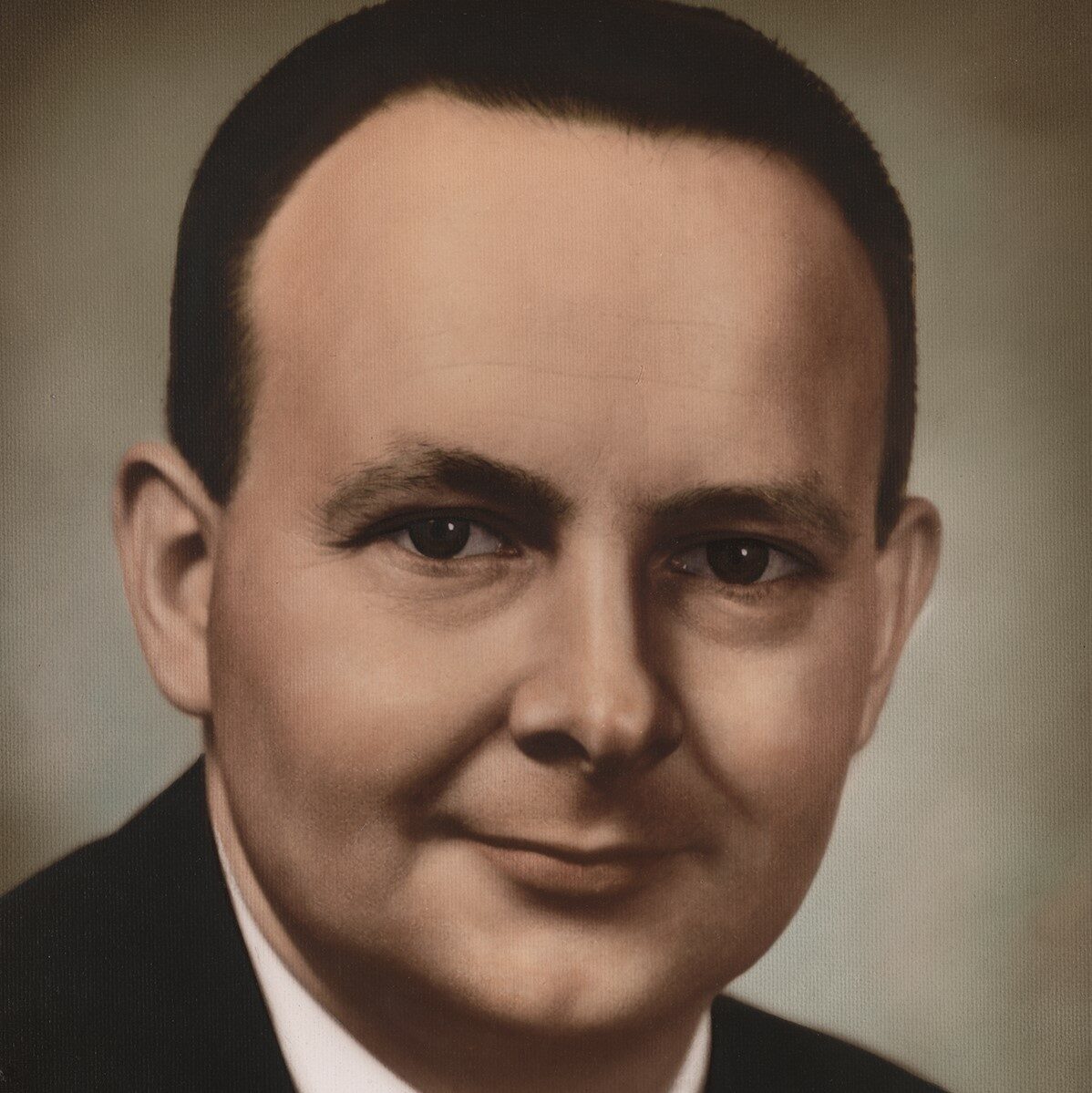
Harry Bangsberg
1964-1967
In 1965, the young and charismatic Harry F. Bangsberg became president at Bemidji State.
Bangsberg encouraged student participation in making decisions affecting the college. He believed that faculty and students should get involved in the world around them and, through his work with the Boy Scouts, his church, as a Rotarian and as a member of many North Central Association accrediting teams, he led the way.
He worked to develop a cultural arts program at Bemidji State College, which attracted people of northern Minnesota to the campus so they could share in the good things that the world of music, arts and letters offered.
Under Bangsberg's guidance, the curriculum was strengthened in the direction of liberal arts, and he worked to develop programs in the Asian studies, in social science and in literature. He initiated the work that led to the 1967 legislative decision to allow Bemidji State to offer a master of arts degree.
And in spite of Bangsberg's professional and community achievements, he was a family man. Weekend afternoons in the winter would find him on the ski slope or at the pool with his five children and his wife, Trudy. In the summer, he enjoyed his garden, sailing and fishing for walleye.
Many in Bemidji compared Bangsberg's college presidency to the national presidency of John F. Kennedy. Bangsberg, a young college president at age 36, was full of ideas and zest, and he brought to the campus a freshness and vitality that were infectious in the college and community. Probably more than specific reforms and innovations, he added to the atmosphere a spirit of enthusiasm and a general feeling that the whole school was moving ahead in a useful, positive direction.
In 1967, he took a tour of Vietnam with other U.S. educators to assist the government of Vietnam in developing a higher education system. On March 23, 1967, a few weeks before their return home, the plane crashed in the mountains north of Da Nang, killing Bangsberg and six others. Bangsberg’s sudden passing saddened the Bemidji State community deeply. He is honored on campus through the Bangsberg Fine Arts Complex that bears his name.
Bangsberg was born on April 7, 1928, in Minneapolis. He earned his bachelor’s degree in history and English at Luther College in 1950. The following year, he attended the University of Iowa to achieve his master’s degree in history. He continued his studies and earned his doctorate at the University of Iowa in 1957.
Bangsberg had several positions in the academic field. He first started out as an instructor for social studies at Western Illinois University from 1953-55. From 1957-59, Bangsberg was an associate professor in history at Wisconsin State University. He served as an assistant director at Wisconsin State University System of Madison from 1959-63. He was also an executive director and part of the Higher Education Coordinating Council at Metropolitan St. Louis from 1963-64.
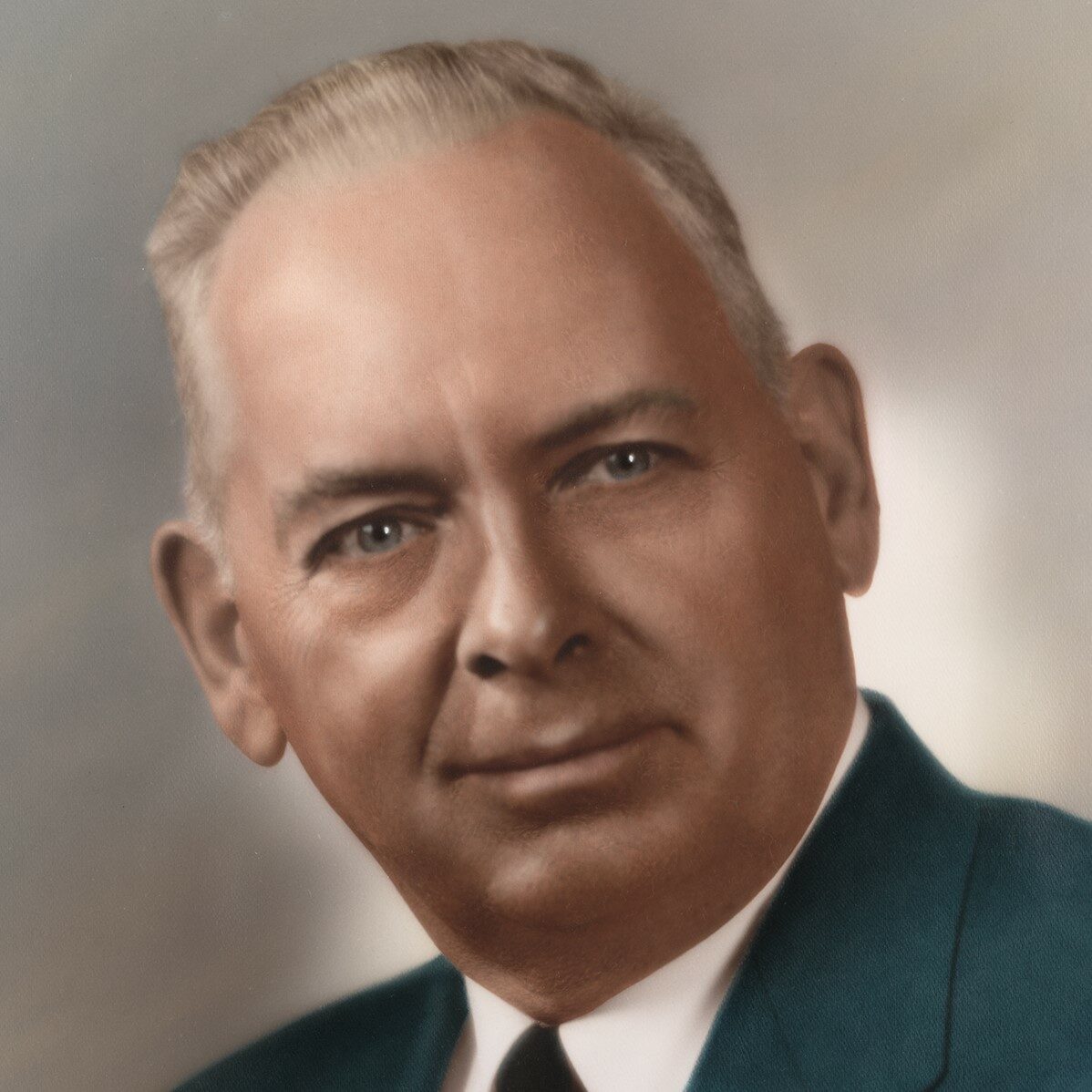
Charles Sattgast
1938-1964
Charles R. Sattgast was just the second president in Bemidji State history, serving from 1938 until his death on March 24, 1964, at age 65. He remains the longest-tenured president in BSU history and, at the time of his death, held the record for the longest-serving university or college president in the United States.
During the Sattgast era, Bemidji State expanded from a teacher’s college to one offering liberal arts and graduate studies. Additionally, the campus grew from 20 to 74 acres, making way for science, physical education, industry, arts and dormitory buildings.
Sattgast took leave from the college in September 1943. According to family records, Sattgast felt he needed to be a leader and join the many young Bemidji State students and faculty who were fighting for the country in World War II. While serving, Sattgast was part of a group that is now known as the Monuments Men. This group’s mission was to retrieve monuments and important historical items before a raid came through. Sattgast was asked to be part of this group based on his knowledge of history and the arts. He returned safely home in 1946.
Sattgast was a passionate environmentalist, saving trees on campus whenever he could, and he spent his leisure time gardening and collecting edible mushrooms. Sattgast was referred to as “a dreamer and immensely honest.”
Sattgast was born in Mount Vernon, Ill., on Jan. 26, 1899. Before serving as president of Bemidji State, Sattgast served as president of Sioux Falls College from 1930-1937. Along with being a World War II veteran, Sattgast is best known for the science building named after him. He died on March 24, 1964.
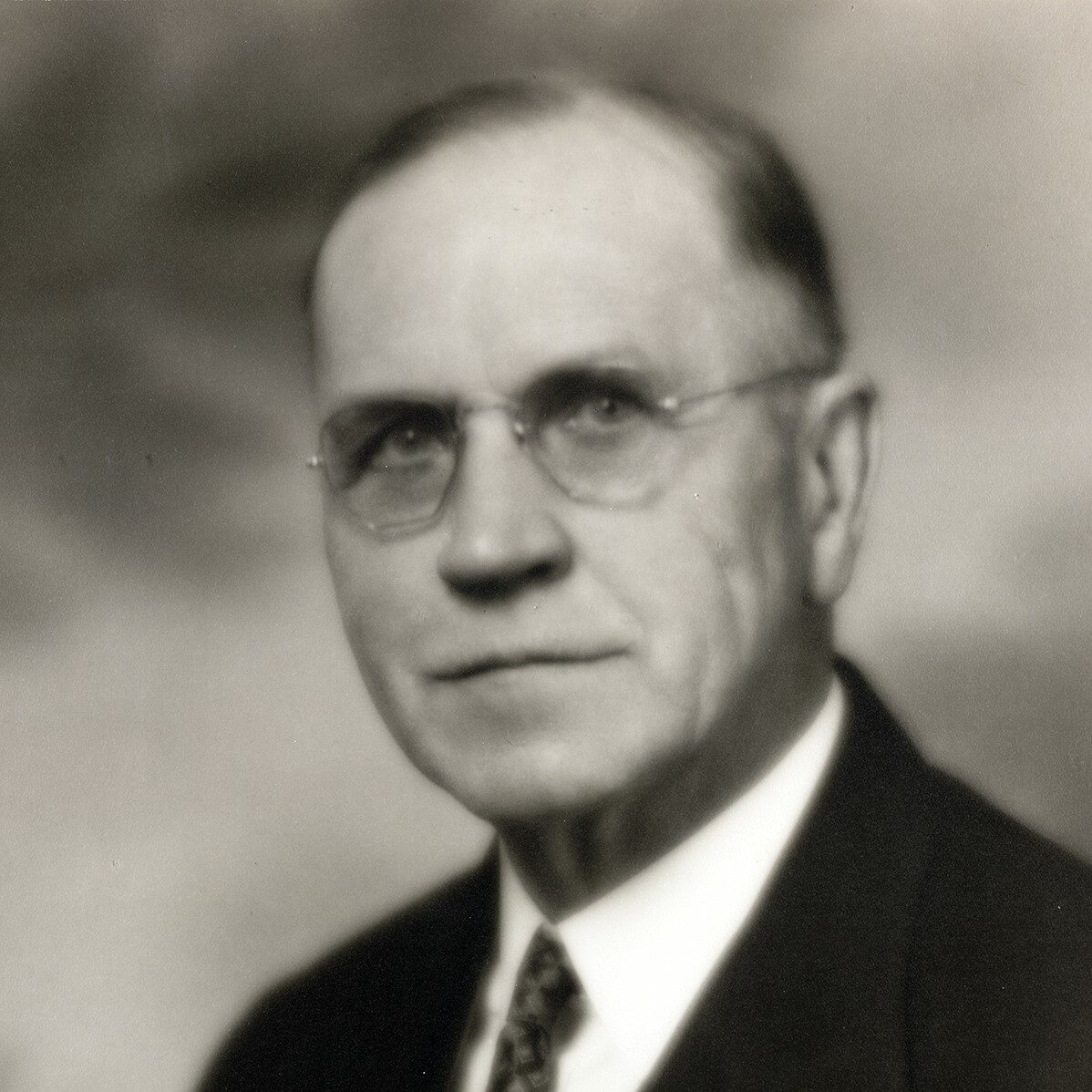
Manfred Deputy
1919-1938
Manfred W. Deputy moved to Bemidji in 1919 and served as the first president of Bemidji Normal School. During Deputy’s presidency, peak enrollment was 537 during the summer session of school in 1924. During the Deputy era, the school had three main buildings: an academic building, a dormitory and a heating plant. The academic building was the main building and is now known as Deputy Hall.
Deputy made a point to have a personal connection with all the students on campus. He even helped students who were struggling financially by giving them money out of his own pocket. Additionally, Deputy invited students with limited income to dinner at his house on a regular basis. He served as president for 19 years until mandatory retirement.
Several years after Deputy had been in Bemidji, the Bemidji Daily Pioneer quoted him in 1927 as saying: "I had expected to spend the rest of my days in Kansas City, but I had been raised and brought up on a farm, and had the true spirit of the Northwest within me. I had been at Mankato and knew the sturdiness of the people. I had faith in this northern Minnesota country. I was sure that the Bemidji school was being established because you needed it."
A staple of President Deputy's tenure was his twice-a-week assembly programs, each lasting nearly one hour, which all students were required to attend. All the faculty sat on a small platform in the front of the room. There were slides shown of someone's trip to China, a talk on character education, a symposium on proper dress, a debate on political or educational problems; often Deputy would simply read to the assembled group, sometimes from the Bible, sometimes from Charles Dickens, William James or Rudyard Kipling, and when he felt in a lighter mood, he would read from the writings of Mark Twain.
Much like his successor, Charles Sattgast, Deputy held strongly to strict Methodist morals, showed paternalism toward students and faculty, and was totally dedicated to serving and improving the college.
Deputy was born near Vernon, Ind., on Oct. 27, 1867. He earned a bachelor’s degree in philosophy and psychology, along with a master’s degree in education. From 1905-19, he taught in Indiana, Illinois, Minnesota and Missouri. He died in Lake City, Iowa, on March 13, 1947.
Faculty and staff
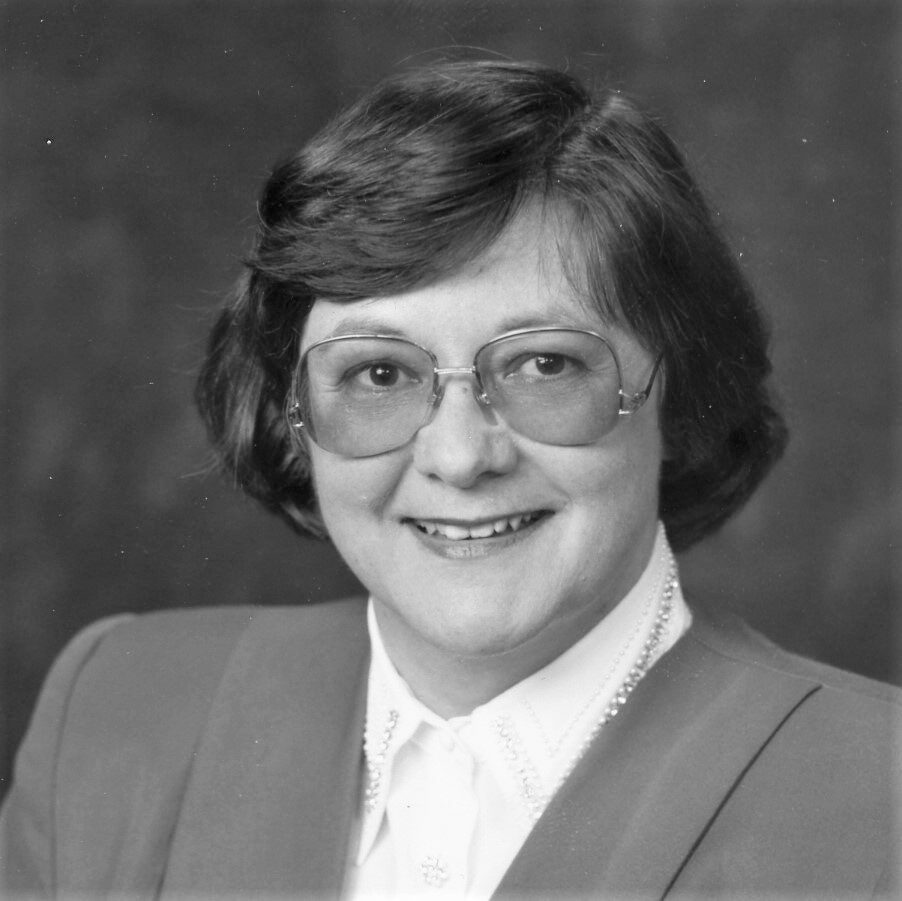
Linda Baer
Interim president (1993-94)
Linda Louise Baer was the senior vice president for academic and student affairs when President Les Duly died unexpectedly on May 8, 1993. She was almost immediately chosen to serve as an interim president. Upon taking the position, Baer made it clear that she wanted to continue to build on the vision that President Duly had.
President Baer led the school in its 75th anniversary. She announced that the theme was “Making a Difference.” The school also began to have a larger and more active alumni group that helped raise money for the school. The school was becoming bigger and bigger, with a rising number of both minority students and transfer students.
Baer helped Bemidji State to not only keep growing and becoming global, but she also helped modernize different buildings on campus. In the summer of 1993, Hobson Memorial Union underwent a renovation that brought in new places to eat and new activities to do. Wally’s also underwent some changes that included an afterhours pizza and sub parlor and new lines at the all-you-can-eat menus during the day.
President Baer retired as president on June 30, 1994, but took on the position as senior vice president of academic and student affairs until 1997, when she took the position of senior vice chancellor for academic and student affairs at Minnesota State Colleges and Universities in St. Paul.
Baer was born in Spokane, Wash., on Sept. 7, 1949. She was raised in Washington and began her post-secondary education at Washington State University, where she received both her bachelor’s and master’s degrees in sociology. She obtained her doctorate in sociology from South Dakota State University.
Before coming to Bemidji, Baer served many different areas at South Dakota State University, including director of the Center for Innovation Technology and Entrepreneurship; administrative associate in charge of data collection and strategic planning; and associate professor in the rural sociology department.
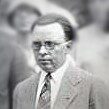
E.W. Beck
Acting president (1938)
Elton Wayne Beck was acting president for the month of January 1938 after president Manfred Deputy served his last day on Dec. 31, 1937. Beck was a faculty member of Bemidji State prior to his month as acting president. President Charles Sattgast came into office on Feb. 1, 1938.
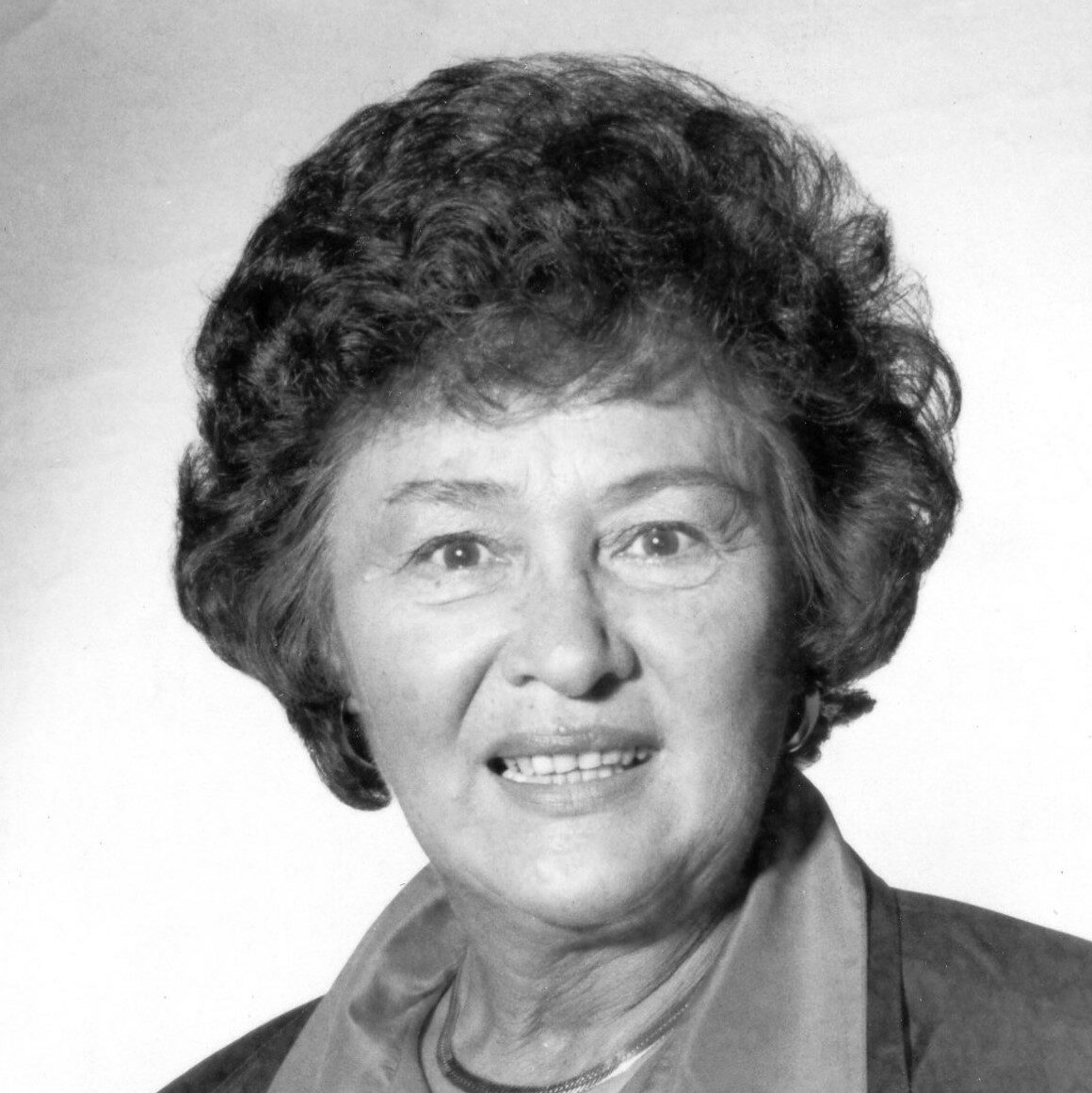
Marion Christianson
Dance instructor
Marion (Fenson) Christianson was a trailblazer, leader, dancer, coach, athletic director, advisor, encourager and advocate for all. "Mrs. C" was a dedicated and beloved BSU educator whose graceful and gracious life positively impacted countless others.
As a student, Christianson was a cheerleader from 1946-50. She came back to campus and started teaching in 1967 and took over the cheer and dance programs at Bemidji State.
She revolutionized the Funtastic Dance Follies, taking over the "Dance Show" from Myrtie Hunt and growing it into an annual tradition.
Among many other accomplishments, Christianson was also BSU's women's athletics director from 1989-95, a former president of the Northern Sun Conference and was the sole honoree of Bemidji State's Outstanding Alumni Award in 1992.
Christianson retired in 1995 and died in 2019. The Marion Christianson Memorial Dance Studio, located in the Gillett Wellness Center, was named in her honor in September 2021.
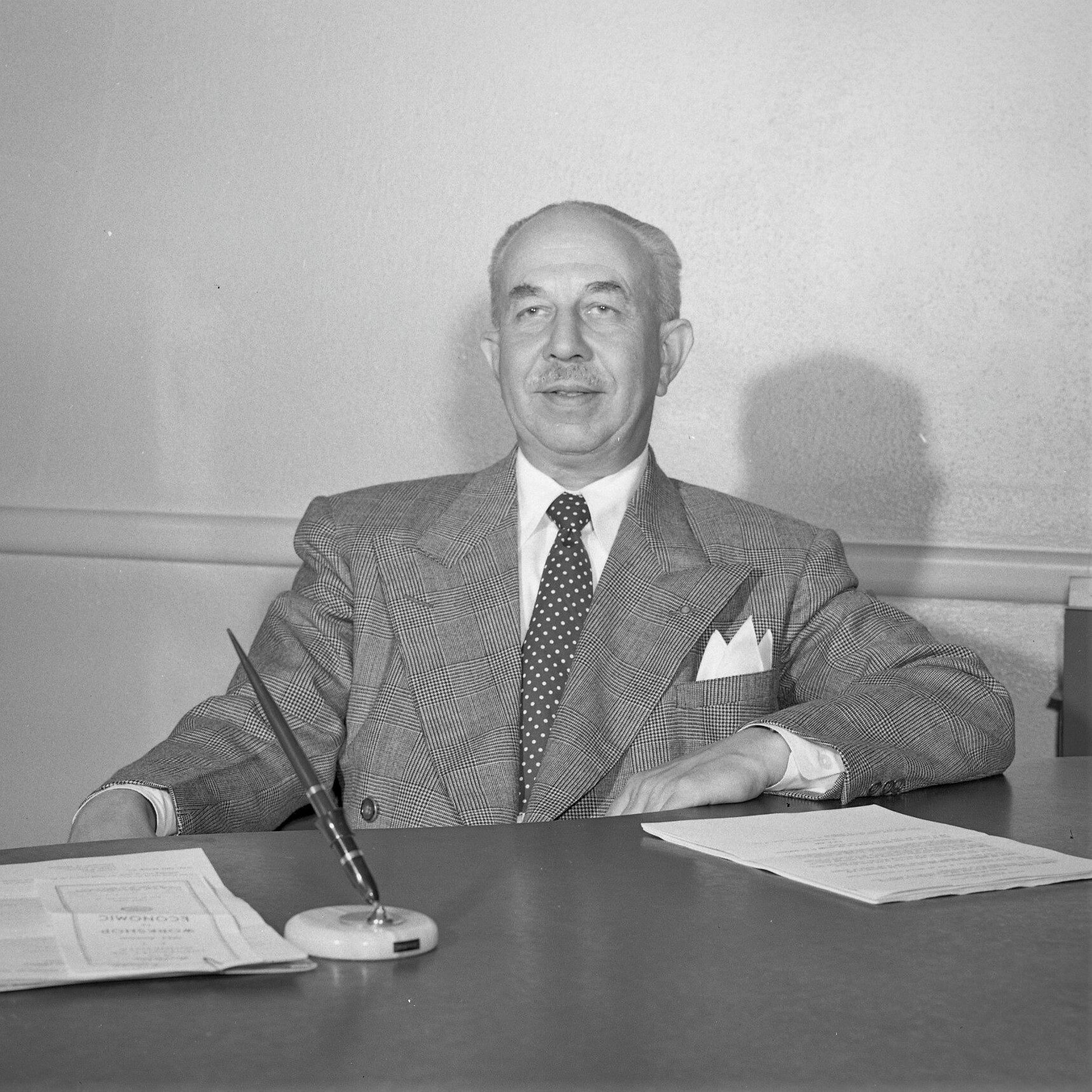
A.C. Clark
Acting president (1943-1946, 1964)
A. C. Clark was the acting president from 1943-1946, when Charles Sattgast was on leave during World War II, and also from April-September 1964 after Sattgast’s death.
While at Bemidji State, Clark served as a social science instructor, chairman in the division of social sciences, director of publicity, placement and public relations, vice president and, finally, acting president. “I believe I held almost every job at this school except that of dean of women,” he once remarked. Clark retired as a Bemidji State faculty member on Sept. 1, 1964, and died on Nov. 5, 1966.
Today, Clark is most famously known for the university's A. C. Clark Library, which is named in his honor.
Clark was born in Iowa Falls, Iowa, on May 27, 1896. He studied social studies at Ellsworth College in his hometown in 1916, earning his bachelor's degree. He earned his master’s at Columbia University in 1923. Shortly before his time as president at Bemidji State, Clark decided to further his education yet again, this time by earning a doctorate in social sciences at the University of Southern California in 1941.
Clark taught at Mankato High School, Ely Junior College and even served as a principal at New Ulm High School prior to his days in Bemidji.
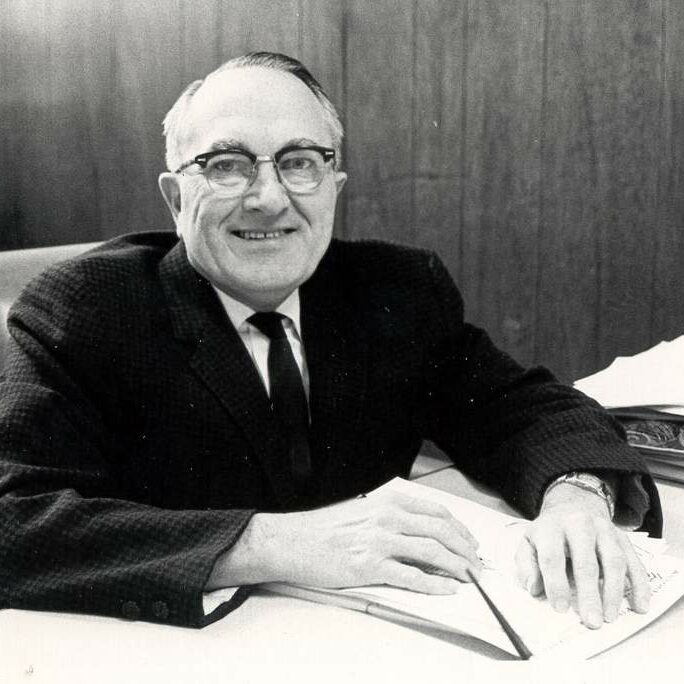
John Glas
Acting president (1967-68)
On May 1, 1967, John S. Glas became acting president of Bemidji State College and held the position until Sept. 1, 1968. In his honor, the John S. Glas Fieldhouse was named after him under the recommendation of the men’s physical education department. The John Glas Fieldhouse housed Beaver Hockey for generations and now houses the Frederick P. Baker Training Center for BSU's athletic teams.
Glas was involved at Bemidji State before his term as acting president. Starting in 1939, he was the business manager for two decades, and he was the assistant to the president for 11 years. He was also the campus executive officer and the vice president for administration.
Glas was born on Oct. 1, 1910, in Waterloo, Iowa. He attended the University of Minnesota, earning his bachelor’s degree in business in 1933.
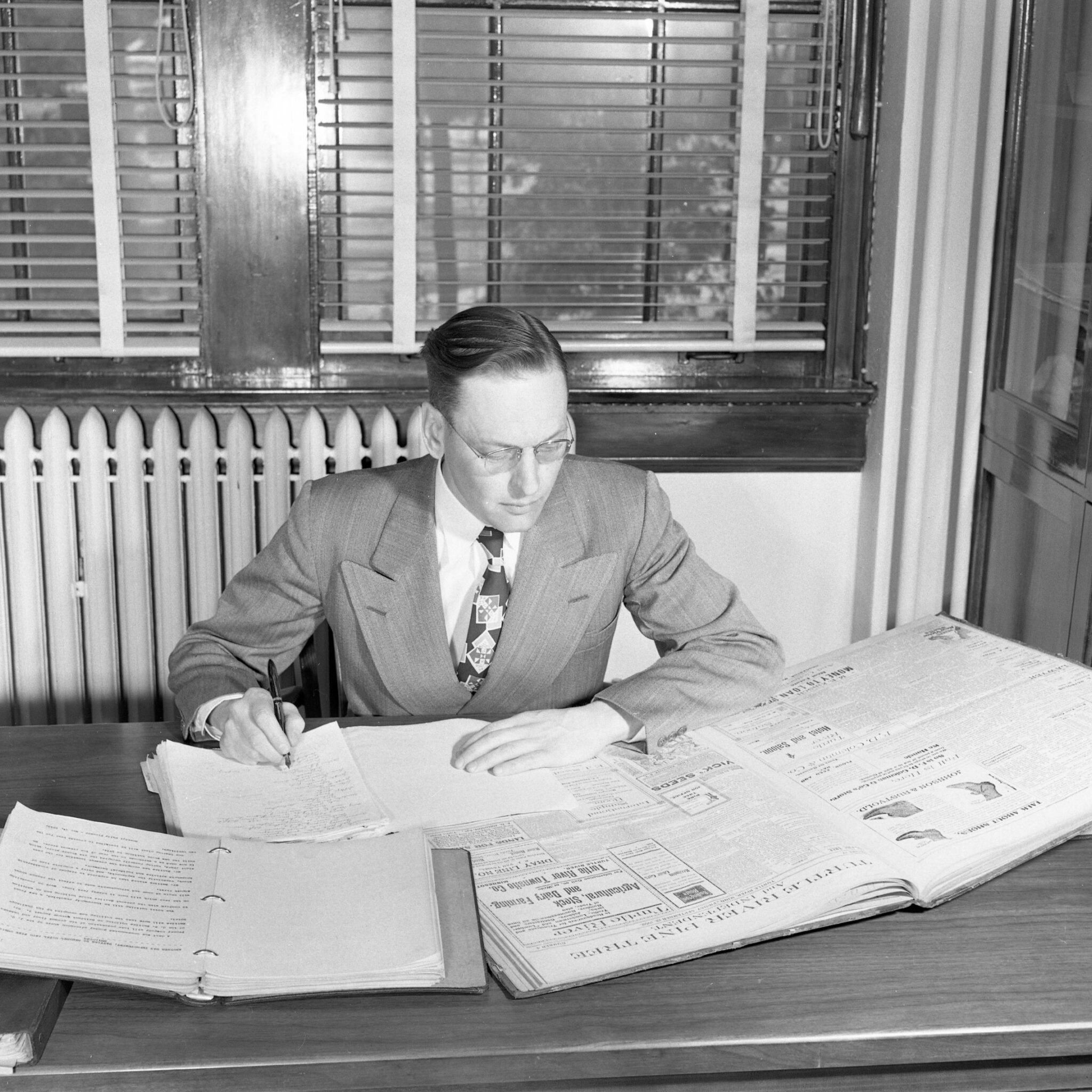
Harold Hagg
History professor
Dr. Harold T. Hagg joined the Bemidji State faculty in 1936, where he spent four decades immersed in research on the northern Minnesota region before he retired in 1976. He wrote prolifically on the history and geography of Bemidji, the Mississippi River headwaters region and the state of Minnesota.
Born July 24, 1909, to Theodore and Sigrid (Tenggren) Hagg in Rochelle, Ill., Hagg earned a bachelor’s degree from Cornell College in Iowa before teaching at the University of Iowa High School. He went on to earn master's and doctorate degrees from the University of Iowa in 1933 and 1936, respectively.
He joined the Bemidji State Teachers College faculty as an instructor and later as a professor and division chair for history. He also served in the U.S. Navy during World War II.
He married Renate Fandry on June 27, 1940, in Carver, Minn. At the time of his death in 2001 at age 96, Hagg and his wife had two daughters, four grandchildren and five great-grandchildren.

Richard Haugo
Acting president (1982)
Richard Ronald Haugo was appointed as the interim president of Bemidji State University in 1982 and held the position from January to August. He then returned to placement and counseling in educational services until he retired in 1988.
Haugo was born July 11, 1925, in Ellendale, Minn. During World War II, he served on the U.S.S. Jason in the Pacific Theater. He then returned and worked in Minnesota doing road construction and then moved to Tacoma, Wash., where he enrolled at Pacific Lutheran College and worked for American Smelting and Refining Company.
Haugo was then asked by the Mine, Mill and Smelter Workers’ Union to research a lung illness that was taking many workers’ lives. During his research, he outlined the physiological effect on the lungs from the arsenic vapor that was created during the smelting process. As a result of his research, affected workers were compensated and Richard Haugo’s name appeared on the attorney general’s “blacklist.” During his life, it remained one of his proudest accomplishments.
In 1958, Haugo enrolled at Bemidji State College with a major in industrial education. After graduation, he moved to Grand Rapids, Mich., where he taught and attended night classes to earn his master’s in education. In 1965, Haugo began teaching industrial technology at Bemidji State College and later became the chair of the Department of Industrial Technology. He then completed his master’s degree in counseling in 1979 and began to help with the counseling in Student Affairs.
He died on Jan. 22, 2009, and the Richard R. Haugo Scholarship was formed in his memory.
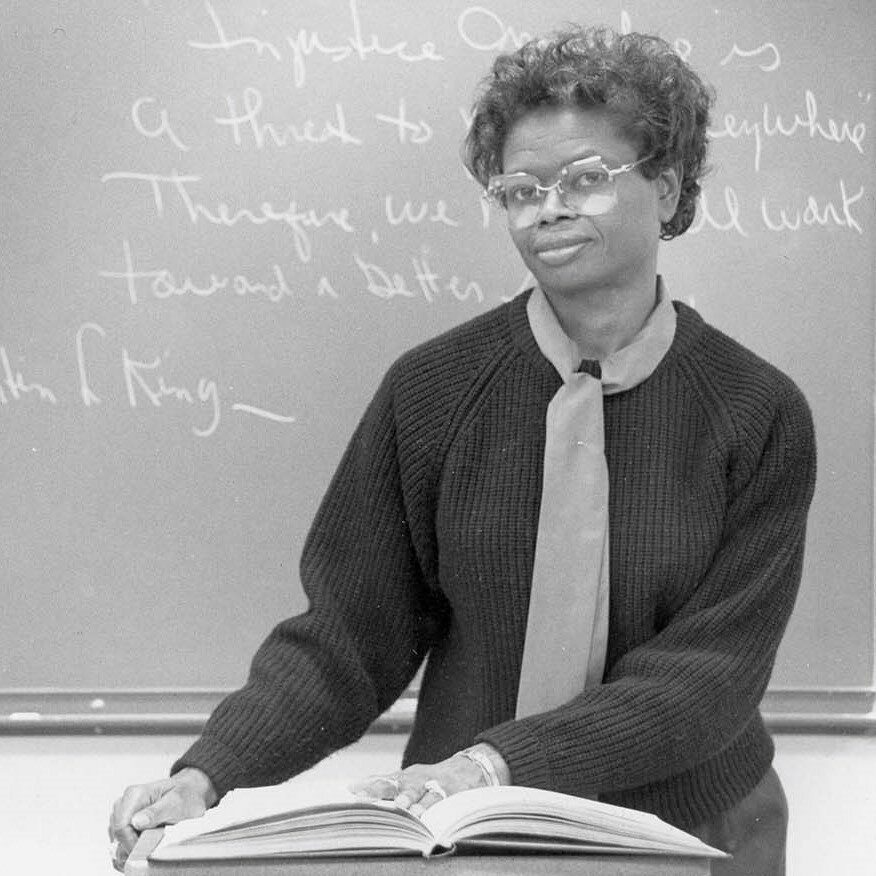
Annie Henry
Education professor
Dr. Annie Henry joined BSU's Department of Professional Education in 1987 and taught until 2007. During her time at BSU, she was instrumental in raising awareness of Black culture, traditions and issues at Bemidji State by organizing Black History Month activities on campus.
She also presented programs on civil rights to students of all ages across northern Minnesota. She taught an African American class outside of the education curriculum and mentored many Black students in their studies and as they prepared for the future. Henry brought speakers to BSU over the years – including Yolanda King, Martin Luther King Jr.’s daughter – and created the university's first endowed scholarships for Black students in education.
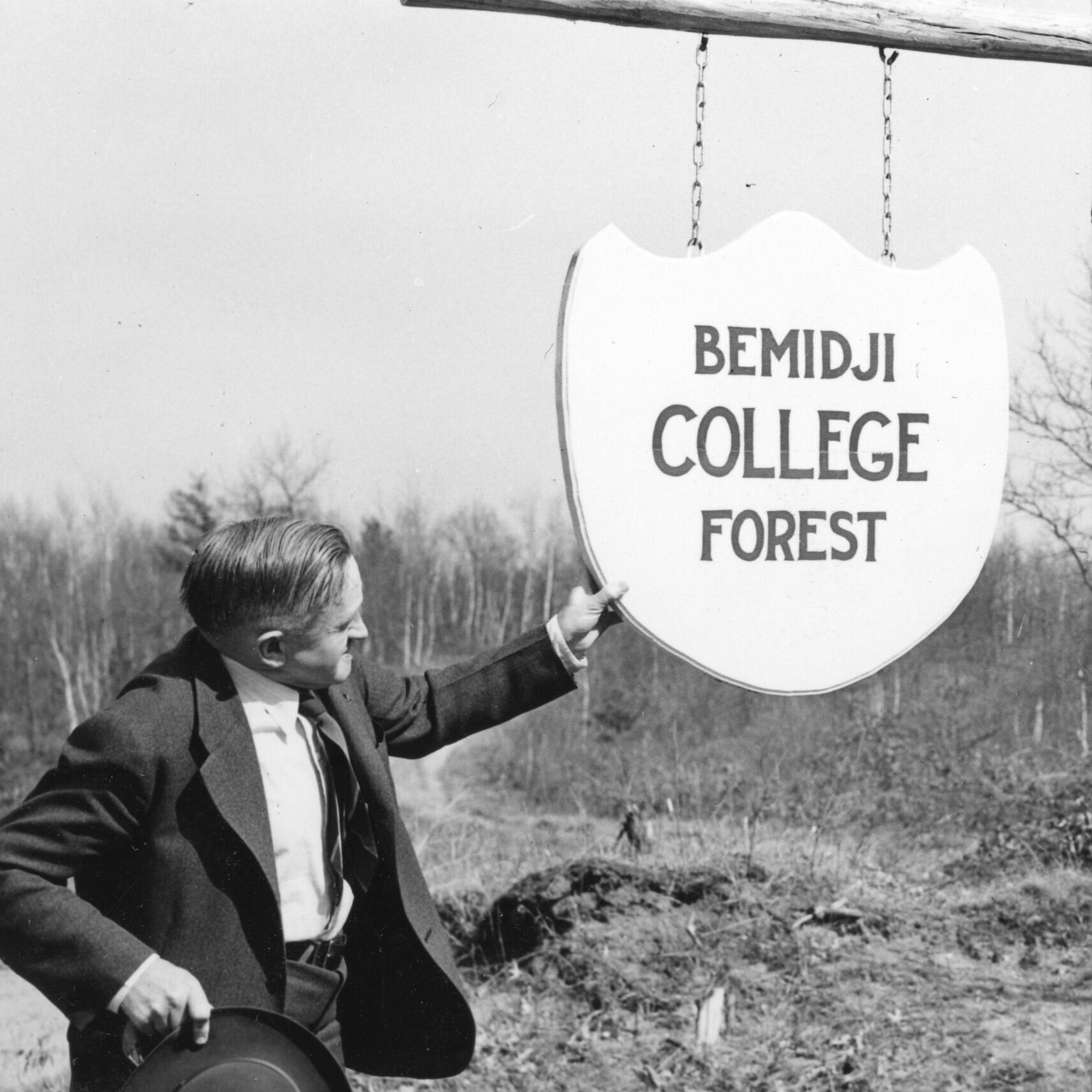
Claude Hobson
Geography professor, conservationist
Dr. Claude Vivian “Mr. Conservation” Hobson is credited with creating the school forest concept and actively campaigned for the passage of the School Forest Law, which passed in 1949. BSU acquired the forest in 1948 for academic and recreational use by the university and community.
Hobson came to Bemidji State University in 1931 and started as a science supervisor in the Bemidji Teachers College Lab School for children. He began teaching college classes in 1938 as a professor of geography and conservation and retired in 1962.
The Hobson Memorial Forest – a 240-acre stretch of hard and soft woods, wetlands, wildflowers, trails and bodies of water 13 miles northeast of Bemidji – and the Hobson Memorial Union on campus both bear his name.
Hobson was born in 1884 in Kansas. He was raised and educated on the prairies of Nebraska. Hobson completed his bachelor's in science at Doane College and his master's at the University of Nebraska. Hobson went on to complete his doctoral work at Iowa, Columbia and the University of North Dakota where he received his doctorate in education and psychology.

Art Lee
History professor, BSU historian
Dr. Arthur O. Lee, professor emeritus of history, was a BSU faculty member from 1959 until his retirement in 1995. He authored “University in the Pines” in 1994, which is considered the definitive history of Bemidji State University, in conjunction with the university’s 75th anniversary celebration.
Lee came to Bemidji State College in 1959 after teaching high school for six years in Osseo, Wis. His lively lectures attracted students from all majors. Lee once explained his unique approach to teaching: “Don’t use notes. Don’t stand behind a lectern. Tell jokes. Laugh. Do dumb things.”
In addition to University in the Pines, Lee also authored “Lutefisk Ghetto: Life in a Norwegian American Town,” published in 1978. Many students recall reading his humorous take on life in an ethnically specific Wisconsin town at the end of World War II.
Lee died on Sept. 24, 2022.
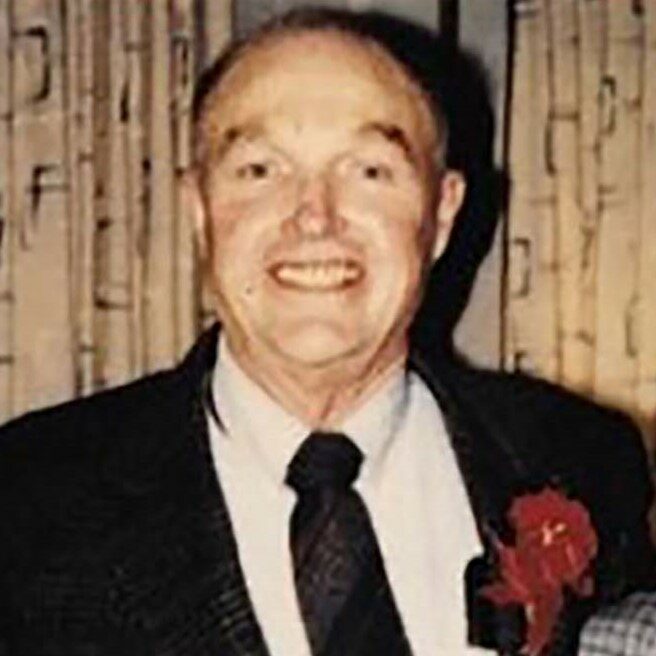
Chuck Holt
Aquatic biology founder
Bemidji State President Harry Bangsberg was looking for someone with a pioneering spirit in 1965 when he recruited the late Dr. Charles “Chuck” Holt to expand the biology department.
Holt, who had recently earned his doctorate from the University of Minnesota, moved north with his wife, Lynne, to take his first job. They thought they would see what a few years would bring at the lakeside campus.
Lynne Holt recalls that the opportunity appealed to Chuck because Bangsberg challenged him to build an aquatic biology program where none existed.
As a student who completed all of his studies in either a classroom or a lab, Chuck was determined to take advantage of the university’s unique setting and get Bemidji State students out on the water.
He learned about a surplus center in the Minneapolis area for items discarded by state departments. He and other faculty members traveled there almost monthly to pick up items for their fledgling department. A microfiche reader became a fish scale reader to study limnology, and two bridge pontoons became a floating classroom known as “The Barge.”
The Barge “was a huge step forward” in the development of the program. It allowed students to get water samples and establish baselines of data about Lake Bemidji in its pivotal position on the Mississippi River chain.
In addition to a hardy nature, field biologists need to be able to share their findings with other scientists in a professional manner. Holt thought it was very important for students to confer with other scientists, make presentations at conferences and publish their findings.
Every effort he made was to advance the aquatic biology program at Bemidji State and prepare students for success after graduation. With ingenuity, hard work and the foresight of the administration, he was able to put the program together from scratch and work at BSU until retiring in 1996.
Having begun with a single professor, the aquatic biology now has three faculty members teaching 70 to 80 students who choose among areas of emphasis in wetlands ecology, aquatic systems and fisheries biology. In addition, many biology master’s students concentrate on the aquatic sciences. The department has a strong relationship with the Minnesota Department of Natural Resources, which translates into research opportunities for students.

Bevington Reed
Acting president (1967)
Bevington Reed did not hold a permanent position at Bemidji State College. He only served as a very brief interim president after the unexpected death of president Harry Bangsberg.
On April 1, 1967, Reed was appointed as the acting president of Bemidji State College after the unexpected death of President Harry Bangsberg. The old way of picking an immediate replacement for a president was altered by the State College Board, who at first decided to not choose an acting president from the existing faculty but instead chose the chancellor of the system, Reed, to be the major "administrator" on the Bemidji campus, even if he would not be on the campus. The board appointed Bangsberg's assistant, John Glas, as "campus executive officer." After one month, this experiement in dual control was abandoned by the board, and Glas was picked as acting president on May 1, 1967. At the same time, Reed resigned as chancellor and returned to his native Texas.

Philip Sauer
English professor
Dr. Philip R. Sauer joined the Bemidji State Teachers College faculty in 1937 as a professor of English and rose through the ranks to become division chair of languages and literature before retiring in 1975.
After agreeing to temporarily replace the school’s only other foreign-languages faculty member, he enjoyed a position as the professor of German – a temporary assignment he held for 25 years.
A native of Winona, Sauer taught at Winona High School for three years before earning his doctorate and joining the BSTC faculty. He published numerous articles and books on church history and hymns, education and language, nature study and German culture.
Sauer earned his undergraduate degree at Northwestern College, earned his master’s degree at the University of Wisconsin and earned his doctorate from the University of Freiburg, Germany.
Sauer married Elizabeth “Betty” McLaughlin on July 1, 1936 in Winona. They lived across from the A. C. Clark Library, next door to the David Park House. The Sauer family donated the house to the university, and since 2004, the Sauer House has been home to the BSU Alumni & Foundation.
At the time of his death in 2001, Sauer and his wife had three sons, nine grandchildren and 10 great-grandchildren.

Ila Mae Talley
Art professor
With sensitivity and sincerity, Ila Mae Talley shared her abilities and talents without reservation.
Talley joined the Bemidji State Teachers College faculty in 1946 and taught at the college until her death in 1963. She endeared herself to students, faculty and friends with her gentle and intuitive approach.
During her tenure, she organized the Bemidji Creative Arts Center and the Minnesota Art Education Exchange, now known as the Art Educators of Minnesota. At BSC, she taught a variety of students in elementary art, techniques of weaving, introduction to art and methods of teaching art.
BSU's Talley Gallery was dedicated to her memory on Sept. 27, 1975.

Carl O. Thompson
Choir director
Bemidji was "tuneless" when Carl Otmer Thompson arrived on campus in 1937, but thereafter his name became synonymous with choral music. He began the a cappella choir in 1937 and the same year helped form the Bemidji Civic Oratorio Society, the combination resulting in an Oratorio being presented on campus every year since.
A man of consummate integrity, the perennial pipe-smoking Thompson served as music department chairperson from 1937-71. He also directed the choirs at First Lutheran Church for 25 years. He was a dedicated, sensitive, soft-spoken teacher, director and administrator; he was both a gentle man and a gentleman. Thompson retired from the faculty in 1973 and a recital hall in Bangsberg Hall now bears his name.
Athletics

Chet Anderson
Football, wrestling coach
When local sports fans hear that a game is at “The Chet,” chances are they know exactly where to go.
Formally called Chet Anderson Stadium, the scenic field is synonymous with plenty of Bemidji teams, including football and soccer at both BSU and Bemidji High School. But often lost in the convenience of the nickname is a knowledge of the stadium’s namesake.
In 1955, a new coach named Chester A. Anderson took command of BSU football. “Chet” coached for 10 seasons, and he still ranks third in program history for wins (43), winning percentage (.555) and games coached (82).
The football facility was officially named after Anderson in 1996, an honor initiated by his former players.
Anderson also coached wrestling from 1955-81, leading three Northern Intercollegiate Conference championship teams and 12 that ranked within the top 10 of the NAIA rankings. Anderson also coached four individual national champions and 37 All-Americans.
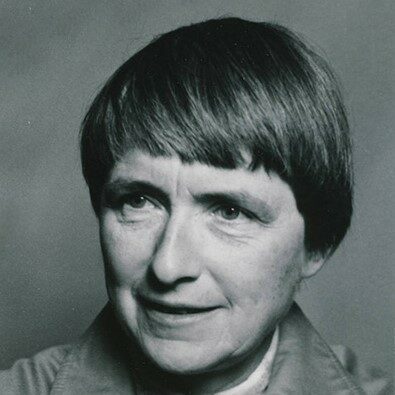
Marjory Beck
Women's athletics founder
Marjory "Mardy" Beck was a leader in starting women's athletics at Bemidji State and is recognized as an official founder.
Beck was a member of the Bemidji State faculty from 1963-69. Beginning in 1969, she oversaw the women's sport programs at BSU as the school's first women's athletics coordinator. Beck was also instrumental in helping to establish the Northern Sun Conference, the women's athletic league that merged with the Northern Intercollegiate Conference in 1992-93 to form the NSIC. Beck served as the first chairperson for the NSC.
In addition to her work with the NSC, Beck was a key figure in helping to create the Minnesota Association of Intercollegiate Athletics for Women (MAIAW). She served as the first chair for this organization, as well. Her significant efforts helped to establish athletics for girls and women throughout the state.

Jolly Erickson
"Mr. Athletics"
With a quick scan through the coaching history of Bemidji State Athletics, one cheerful name is bound to pop up in more places than not.
Hjalmer “Jolly” Erickson became a do-it-all coach for Bemidji State Teachers College after he first stepped on campus in the 1930s, earning the nickname “Mr. Athletics” with 17 years of experience on the Beaver sidelines.
Most notably, Erickson coached the football program from 1938-1954 and racked up 53 victories, a then-program record. On the hardwood, Erickson coached the men’s basketball team in 1944-45 and 1945-46, where he compiled a 23-6 record and cemented a still-standing program best for winning percentage (.793).
The Moorhead native also coached track, tennis and golf at different times during his tenure at BSTC.
Erickson originated the Beaver Relays track event, which is still an annual showcase today, and he held coaching clinics in Bemidji that attracted the likes of coaching legends Adolph Rupp and Vince Lombardi, among others.
Erickson also pioneered the football program through the World War II days, a rarity in the region.
Bemidji Teachers was the only Minnesota teachers college to continue to football program throughout the war as others temporarily suspended their teams due to a lack of available men on campus.
The Beavers went 4-0 in 1944, beating Eau Claire (Wis.) and Concordia College twice each. BSTC was one of 15 undefeated teams in the nation, and that year remains the program’s lone undefeated and untied season.
Erickson also founded the popular "Paul Bunyan Week" festivities of yesteryear. Behind it, Erickson – likely more than any other person on campus – perpetuated its development into a college tradition and an epicenter of school pride.
Erickson gave up coaching in 1954 due to health. He died of a heart attack in 1959 at the age of 53.

Ruth Howe
Women's athletics founder
As a physical education teacher, Dr. Ruth Howe was a driving force in women’s participation as a coach, while her diligent work behind the scenes helped thrust Bemidji State women into intercollegiate athletics. For her efforts, Howe is celebrated as an official founder of Bemidji State women’s athletics alongside Marjory Beck and Betsy McDowell.
Howe's work was instrumental in bringing women's intercollegiate athletics to BSU and keeping them on campus.
She coached for more than 20 years beginning in 1964, while the teams were still participating in extramurals. In 11 years as the women’s basketball coach, she led the Beavers to Minn-Kota titles in 1972-73 and again in 1975-76. In 1976, she took over the women’s tennis team and went on to place as high as second in the conference, losing only one match in 1978. She also led the team to back-to-back sixth-place finishes at the MAIAW state tournament in 1979 and 1980.
Howe, a teacher by vocation, carried that into the way she coached her teams. She taught fundamentals and developed players into young female athletes who were prepared to go on and teach the game to others themselves.
Her coaching responsibilities at BSU included the following sports: women’s basketball (1964-77), softball (1969) and women’s tennis (1976-86). For basketball, Howe was the first head coach in school history and amassed a 95-50-1 overall record in 11 seasons, still the best winning percentage (.653) of any BSU coach with more than one season of experience. Her basketball teams also achieved five appearances in the MAIAW state tournament.
Howe was born in Braham on March 4, 1930. She attended the University of Minnesota and received her bachelor's degree in physical education in 1952 and her master's in 1957. While at Bemidji State, Howe completed her doctorate of physical education from the University of Indiana in 1968.
Howe was an elementary, junior high and high school physical education teacher in Ely from 1952-54 and taught junior high health and physical education in Minnetonka from 1955-57. For the next 30 years, she taught and coached at Bemidji State University (1957-86) and retired as a professor emerita in 1986.
In 1969-70, Howe implemented basketball and volleyball workshops and was an original member of the Minn-Kota Conference committee. In 1974, she was MAIAW president and served as a board member from 1972-75. She was also the Minn-Kota and MAIAW basketball chairperson, Minn-Kota tennis chairperson and conducted several central district conferences and was a member of Minnesota Association for Health, Physical Education, Recreation and Dance (MAHPERD) and Central District Physical Education for College Women (CDPECW) Constitution and Resolution Committees. In 1989-91, Howe was on the United States Curling Association (USCA) Board of Directors and helped curling become an international and Olympic sport. She participated in the first Minnesota women’s curling play-downs. In 2001, she received the Bemidji Women’s Curling League Plaque for 45 years of curling achievements.
Howe was inducted into the BSU Athletic Hall of Fame in 1986 and into the NSIC Hall of Fame in 2003. She died on Dec. 20, 2023, at the age of 93.
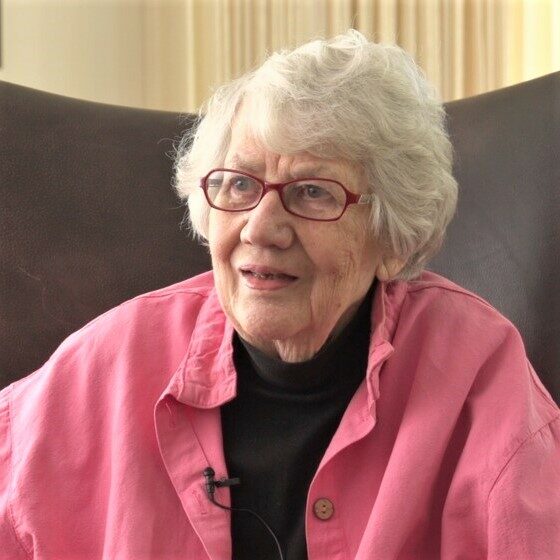
Betsy McDowell
Women's athletics founder
Betsy McDowell, a pioneer and an official founder of Bemidji State women’s athletics, helped female sports evolve from an afterthought into a bright spot.
She spent 29 years on campus with her sleeves rolled up, shaping the early identity of the Beavers during an era in which support was scarce and funding nearly nonexistent. She defied odds and conquered giants, and she trailblazed competitive avenues for every single female athlete at BSU – past, present and future.
McDowell joined the college’s physical education department in 1966. She founded the women’s field hockey program as an extramural sport in 1969 and soon coached the team for 17 mighty successful seasons. She is the winningest female coach in Bemidji State history with 388 victories.
The Beavers’ field hockey program rose to national prominence under McDowell. They won eight straight Minn-Kota Conference titles (1971-78), six straight state titles (1975-80), four regional titles and qualified for the national championships seven times. What’s more, McDowell’s accomplishments also overcame numerous barriers restricting funding for women’s athletics.
She coached the team from 1969-85, when the program was dropped. McDowell is the only intercollegiate coach the program ever knew. She also coached the BSU softball team during its inaugural season in 1982.
McDowell didn’t wait for Title IX – a 1972 law that prevents discrimination based on sex in federally funded programs and activities – to take hold. At the time, such an idea was largely a pipe dream.
Instead, she and fellow physical education faculty members Ruth Howe and Marjory Beck brought extramural women’s basketball, volleyball, field hockey and swimming to Bemidji State in the 1960s, then watched their growth once Title IX took hold years later. The three also helped organize the Minn-Kota Conference, a competitive women’s league for schools in Minnesota and North Dakota and one of the first of its kind in the country.
McDowell, Howe and Beck are now celebrated as the three official founders of BSU women’s athletics.
McDowell retired from the university in 1995. She was inducted into the Bemidji State Athletics Hall of Fame in 1996 and the NSIC Hall of Fame in 2006.
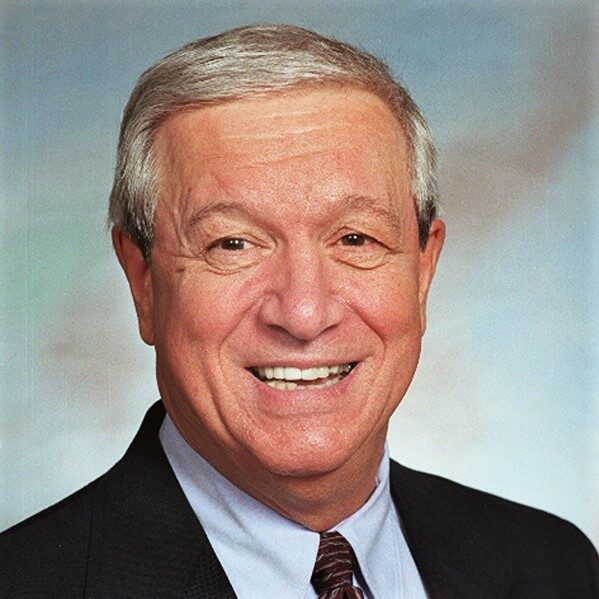
R.H. Bob Peters
Men's hockey coach
Bob Peters earned a bachelor's and master's degree from the University of North Dakota. While at UND, he was a hockey letterman playing goalie for the Fighting Sioux. Upon graduation, he taught and coached at East Grand Forks High School for one season before returning as assistant coach at UND, where the team won the national championship in 1963. Peters was named UND's head coach in 1964, where his team won the conference championship and placed third at the Frozen Four, earning him WCHA Coach of the Year honors. Peters coached at UND for two years before making a career decision to leave a powerhouse to help build a fledgling program at Bemidji State. Peters coached at BSU for 34 years – earning many titles, honors and awards along the way – and left his mark indelibly on the face of collegiate hockey.
Among Peters' accomplishments are 13 national championships, 27 national playoff appearances, 17 conference championships and a BSU career winning percentage of .704. He compiled a 702-293-49 record at BSU in 34 years and an overall record of 744-313-50 in his 36 years as head coach at the collegiate level.
Peters was the first coach to guide one school to 700 victories and, upon retirement, he ranked second nationally in wins for any college hockey coach. His team held the longest unbeaten streak of 42 games, and his 1983-84 team still holds the national collegiate record for the most wins in an unbeaten season at 31-0-0. He coached over 80 All-Americans during his career at BSU and had five skaters play on US Olympic hockey teams.
Peters has been recognized with numerous awards during his career, including the NAIA Coach of the Year in 1974 and 1980; the America Hockey Coaches Association Ed Jeremiah Award in 1984; the NCAA Division II-West Coach of the Year Award in 1984; the NCHA Coach of the Year award in 1982, 1984, 1985, 1986 and 1991; the NCAA Division III Coach of the Year Award in 1986; the AHCA John MacInnis Award in 1995; and the Hobey Baker Legend of Hockey Award in 2001.
Upon his retirement from BSU in 2001, Peters became the Commissioner of the College Hockey America conference. The regular season conference championship trophy for both the CHA and the NCHA are named in his honor.
Peters is also a member of the UND Athletic Hall of Fame and the Northwestern Ontario Sport Hall of Fame.
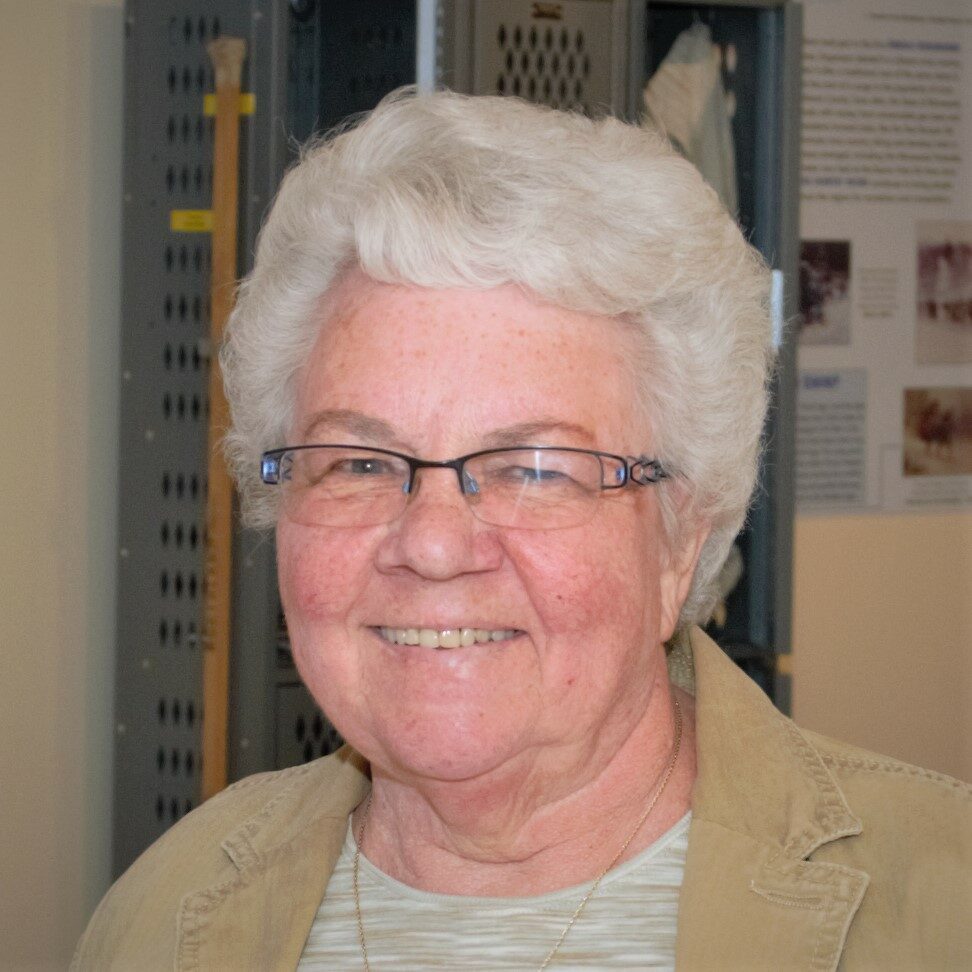
Pat Rosenbrock
Women's athletics historian
Pat Rosenbrock helped write the history books for women's athletics at Bemidji State University, literally and figuratively. Not only was Rosenbrock a successful coach of three different sports and the school's women's athletic director for a short time, but she also helped research and fill in the gaps in the early days of women's athletics at Bemidji State. Rosenbrock – who was hired in 1969 and worked at BSU until her retirement in 2006 – spent time as a physical education professor, director of women's studies, women's athletic director, coach and resident historian.
She served as the women's athletic director for two years, and she coached gymnastics, volleyball and track and field for a combined 20 years. She coached the gymnastics program its first six years of existence from 1969-75 and found immediate success, as her teams won six straight Minn-Kota Conference championships. She coached track and field from 1971-82 and won two MAIAW state team titles while coaching numerous individuals to state titles. Rosenbrock took over the volleyball program in 1974 and came out as the winningest volleyball coach in BSU history when she left the program in 1989 with a 293-219-4 record. She won seven Minn-Kota titles, finished second in the MAIAW state tournament three times, won NAIA District 13 titles in 1978 and 1988, and shared the 1988 Northern Sun Conference title with Minnesota Duluth.
While her coaching accomplishments are many and impressive, Rosenbrock was also the driving force behind capturing the history of Bemidji State women's athletics. Rosenbrock knew there were many female athletes and coaches who deserved to be remembered for their accomplishments at BSU, but there was no written history of the women's athletic department. She wanted to change that. In an effort to ensure that the history of women's athletics at Bemidji State in the post-Title IX landscape would not be forgotten, Rosenbrock worked to research and write the history of those early BSU women's teams. A lack of records made it difficult to fill in some of the gaps, but she was able to make headway and give credit to those early athletes and teams at BSU.
As part of her research, Rosenbrock helped spearhead a celebration for the 30th anniversary of women's athletics at Bemidji State in 2000. Thanks to her work, many female athletes from the 1970s and 1980s came back for the events, and they were able to grow the school's history even more. Twenty years later, she was honored with the title of Historian of Women's Athletics at the celebration of the 50th anniversary of women's athletics at BSU.
She was inducted into the Bemidji State Athletic Hall of Fame in 2008. Thanks to Rosenbrock's efforts, the pioneers that made women's athletics at Bemidji State possible will not be forgotten, and coaches and athletes in the future will have a better understanding and respect for the people who paved the way for female athletes at BSU.
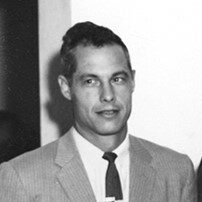
Vic Weber
Athletic director
Victor "Vic" Weber was a significant figure in advancing and promoting Bemidji State men's athletics for two decades in the Northland.
Weber arrived in 1959 and began his career at BSC as the men's track and field coach from 1960-65. He coached the squad to the NAIA District 13 track and field championship in 1963. From 1964-80, Weber worked as Bemidji State's athletic director in addition to serving as the health, physical education, and recreation division head. He also served as a member of the NAIA District 13 executive committee from 1968-80 and the President of the NAIA Coaches Association in 1973-74.
While at Bemidji State, Weber was very active in men's ice hockey. In 1959, he helped to re-establish the Beaver puck program on the shores of Lake Bemidji. Weber coached the BSU squad to a 42-19-2 record and served as chairman of the NAIA Hockey Coaches Association from 1968-1971. He also served on the U.S. Olympic Hockey Committee in 1969-70.
In 1971 and 1975, Weber received the National NAIA Award of Merit for his efforts in intercollegiate athletics. He was inducted into the Bemidji State Athletic Hall of Fame in 1982 and the NSIC Hall of Fame in 2000.
Alumni and friends
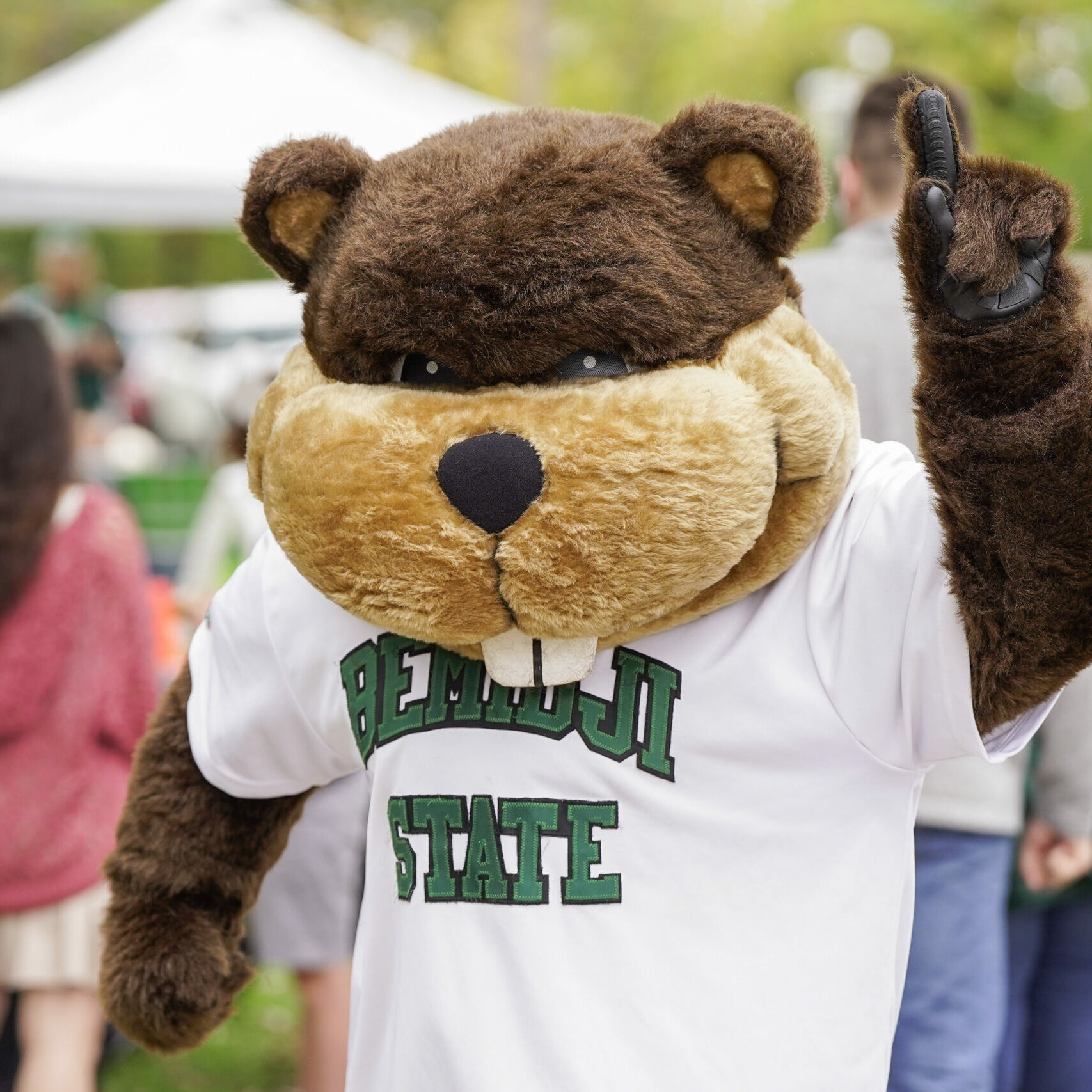
Bucky the Beaver
Bemidji State mascot
Have you seen a buck-toothed, tail-wagging, dam-building mascot on the loose? No doubt you saw Bucky the Beaver doing his thing.
Bemidji State's beaver mascot has been around since at least the 1950s in one form or another. Today's version of Bucky has him looking younger, fresher and peppier than ever.
Our "Beavers" nickname dates back nearly a century. As President Manfred Deputy reviewed football practice one evening in May 1932, he remarked that the players were "working hard as beavers." He called the team into a huddle and, raising his hands above their heads, declared, “I christen this team the Beavers!”
Just like that, an identity was formed. And Bucky was well on his way to becoming perhaps the most recognizable face of the university.
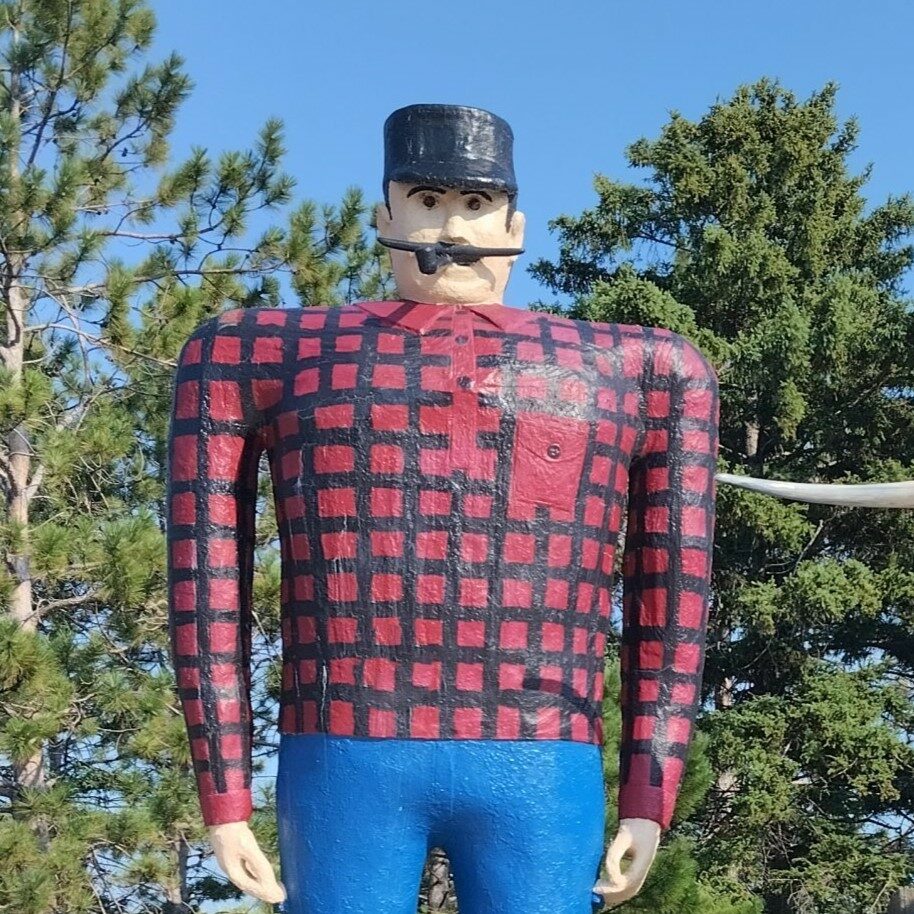
Paul Bunyan
2012 honorary alumnus
Nothing screams "Bemidji" quite like Paul Bunyan.
Bemidji's iconic duo – comprised of Paul and his trusty companion, Babe the Blue Ox – has stood tall since 1937. The towering tandem live in downtown Bemidji and serve as the go-to photo op location in town.
Bemidji's civic leaders were searching for a way to stimulate tourism in 1936, so they decided to sponsor a winter carnival and promote the city's resources for winter sports. The carnival became reality on Jan. 14, 1937, but with an added promotional twist: the unveiling of giant concrete statues of Paul Bunyan and Babe the Blue Ox, which were designed to honor Bemidji's logging heritage by serving as mascots for the festivities.
Cyril M. Dickinson served as the "mastermind" behind the creation of the 18-foot-tall Paul, which was modeled after 6-foot Earl Bucklen, a future mayor of Bemidji, on a 3-to-1 scale. Jim Paton supervised construction of Babe.
A whopping 737 manhours went into the construction of Paul, who weighs 2.5 tons. Babe, meanwhile, has horns spanning 14 feet across. The same 3-to-1 scale was used on Babe with the assistance of a local ox.
Babe has permanently stood at Paul's side after a year of touring Minnesota in parades -- with automobile's exhaust pipe hooked up through his nostrils to create the impression that the ox was breathing in the cold air.
Paul Bunyan also became an honorary Bemidji State alumnus in 2012.

A.P. Ritchie
Committee for normal school chairman
A.P. Ritchie was instrumental in bringing a normal school to Bemidji. He was the chairman on the committee that lobbied with the state government that Bemidji should be the site of the new school in the early 1900s, and he was also a school superintendent, postmaster, county commissioner and school board member.
Elsewhere, Ritchie was instrumental in founding the current Chamber of Commerce, securing a Carnie Library, establishing Diamond Point as a city park and building the public school system.

Shaynowishkung
Chief Bemidji
Shaynowishkung was an Ojibwe man who became the first permanent settler of Bemidji in the mid-19th century.
As a child, Shaynowishkung lived in the Leech Lake and Cass Lake area, and he went on many trips up the Mississippi River with his father to the area that later became Bemidji. Upon reaching adulthood, Shaynowishkung traveled up the Mississippi River in his birch bark canoe and settled on the south shore of Lake Bemidji.
Credited with helping the area's first white settlers survive and respected by both the Indians and settlers for his gentleness, friendliness and fairness to all people, Shaynowishkung was honored with the title of "Chief Bemidji." Today, a bronze statue dedicated to Chief Bemidji, honoring the Anishinaabe people, stands overlooking Lake Bemidji in Library Park.

